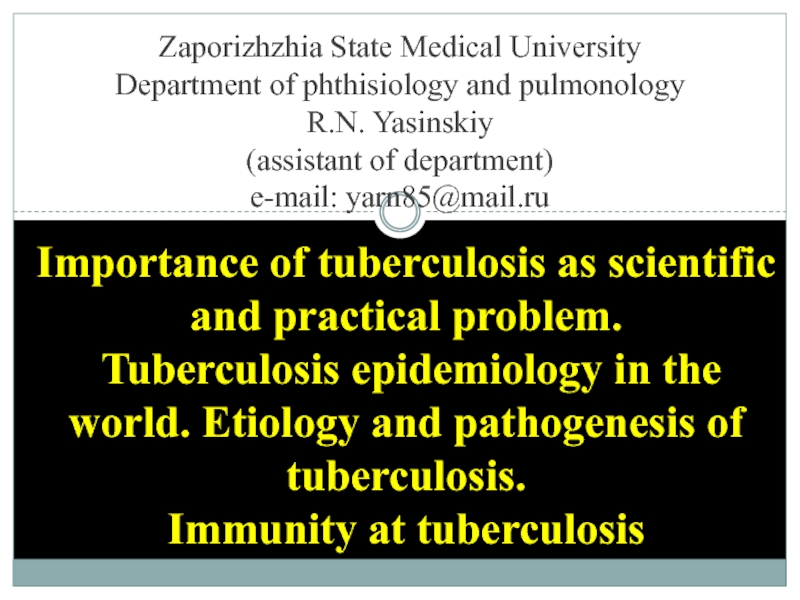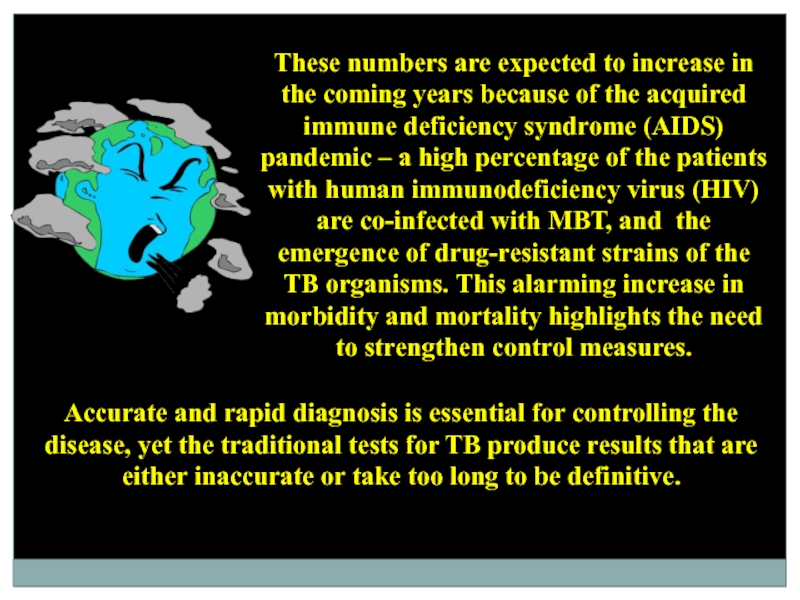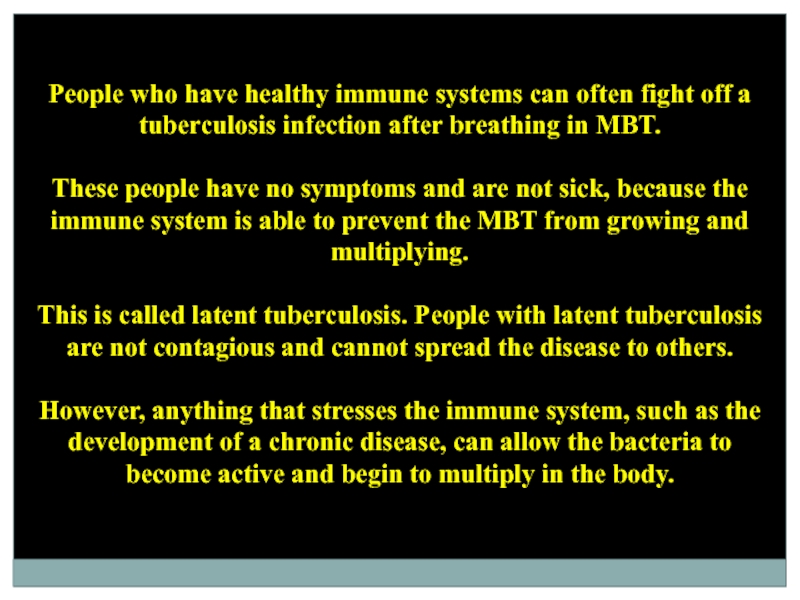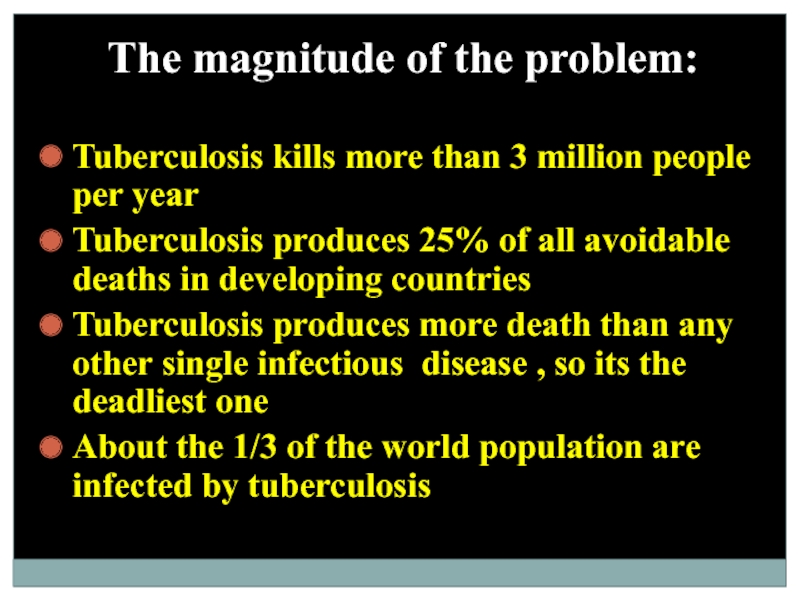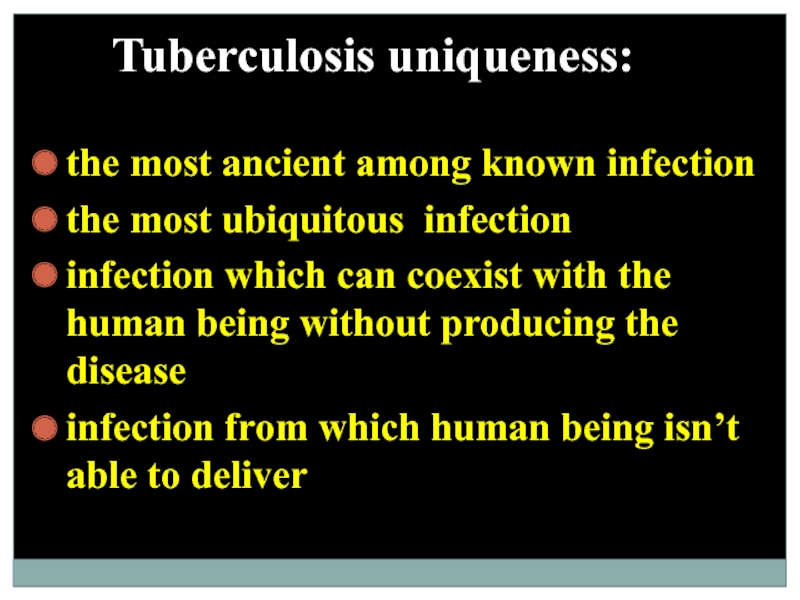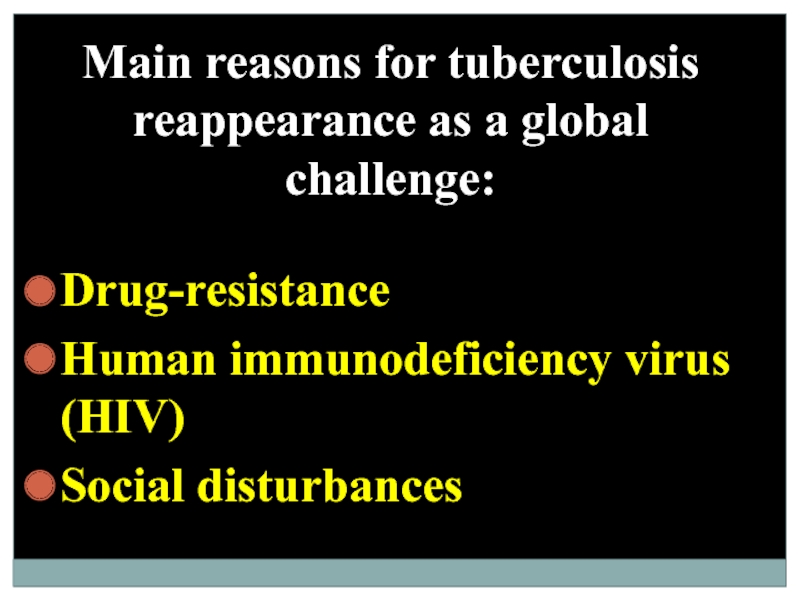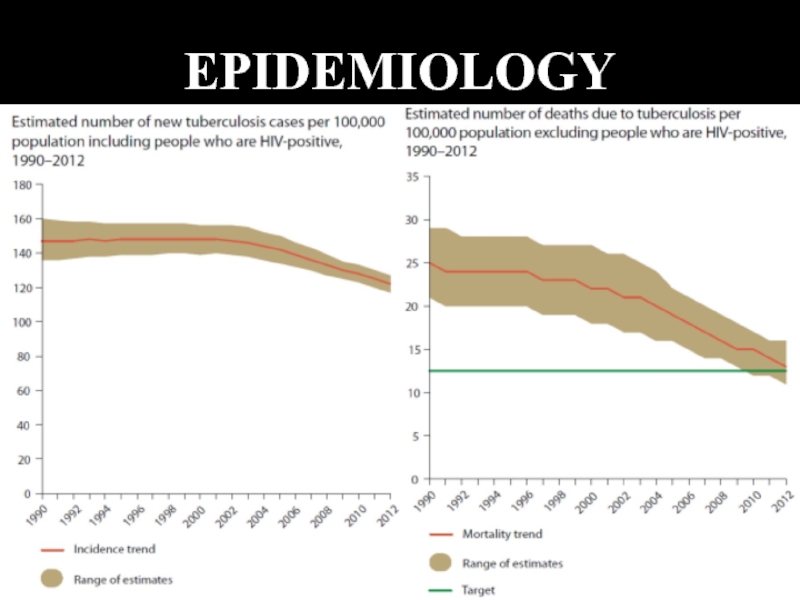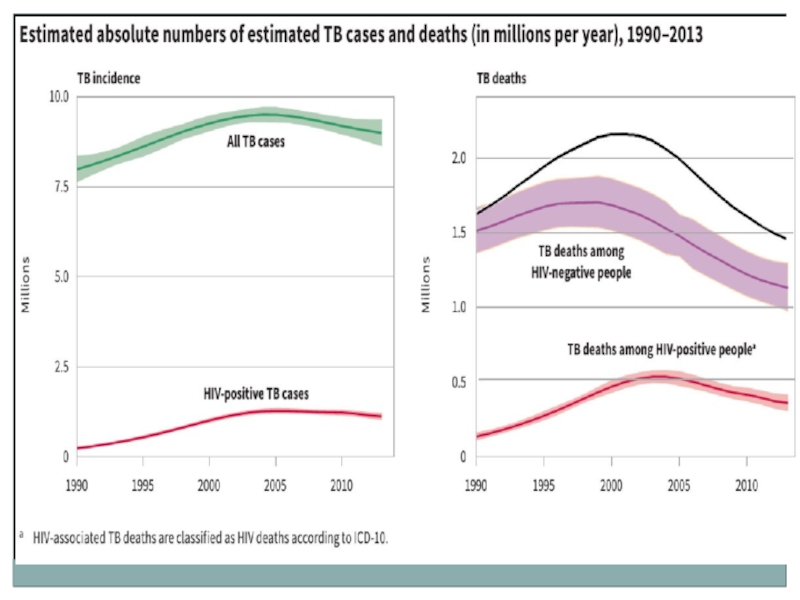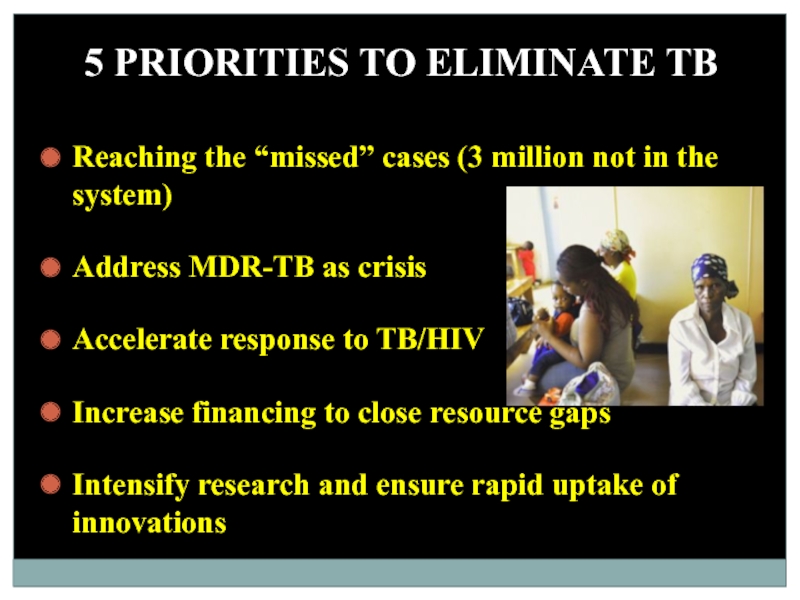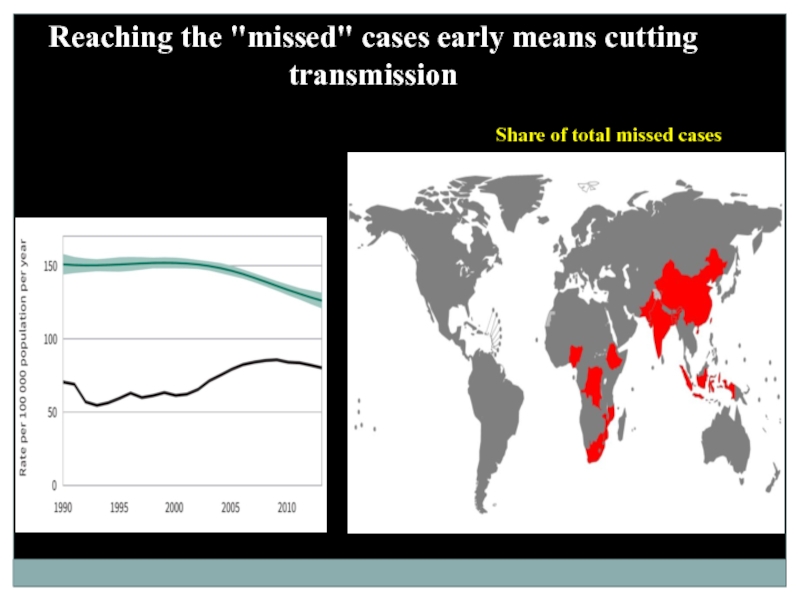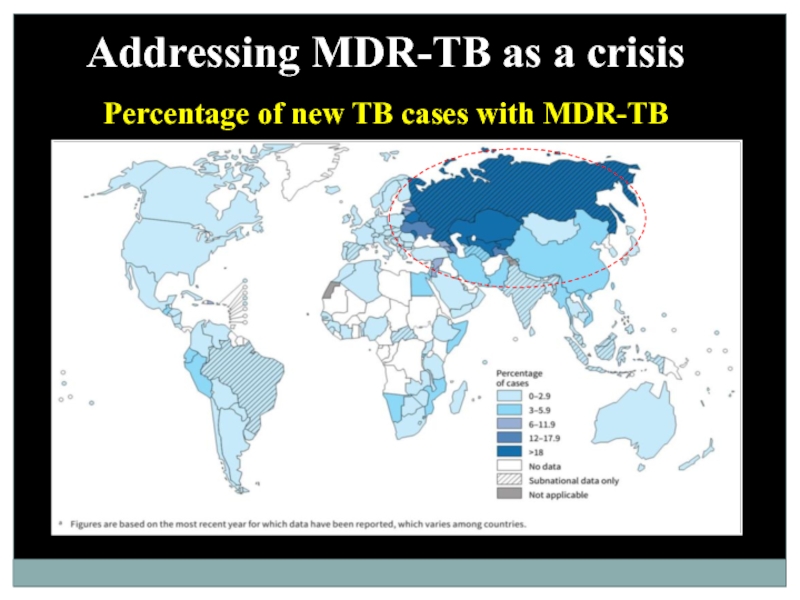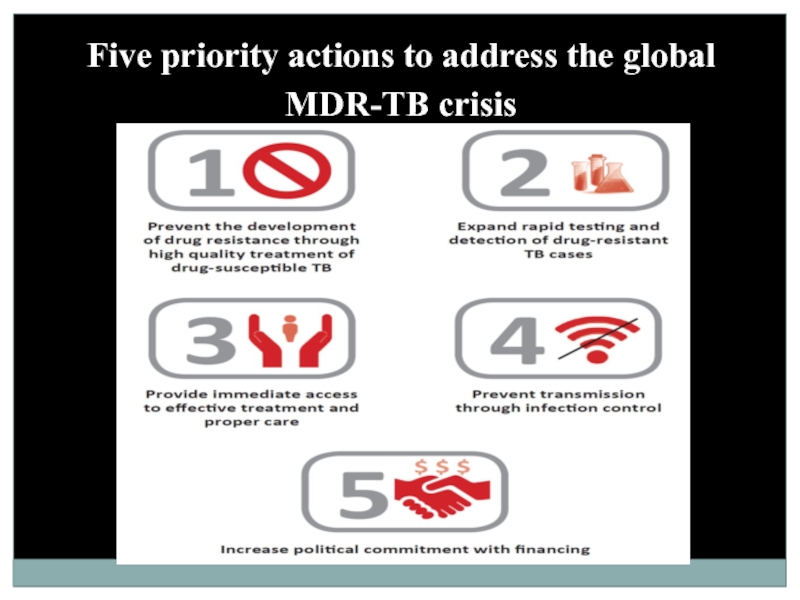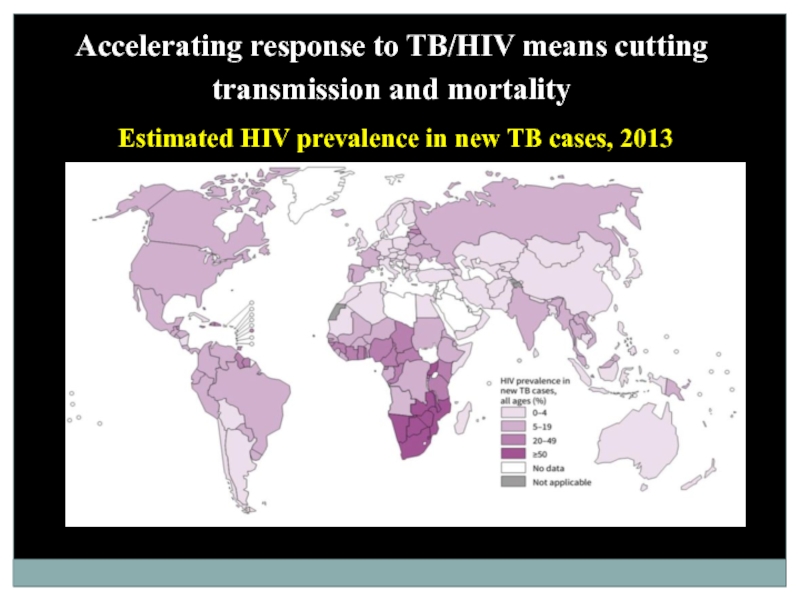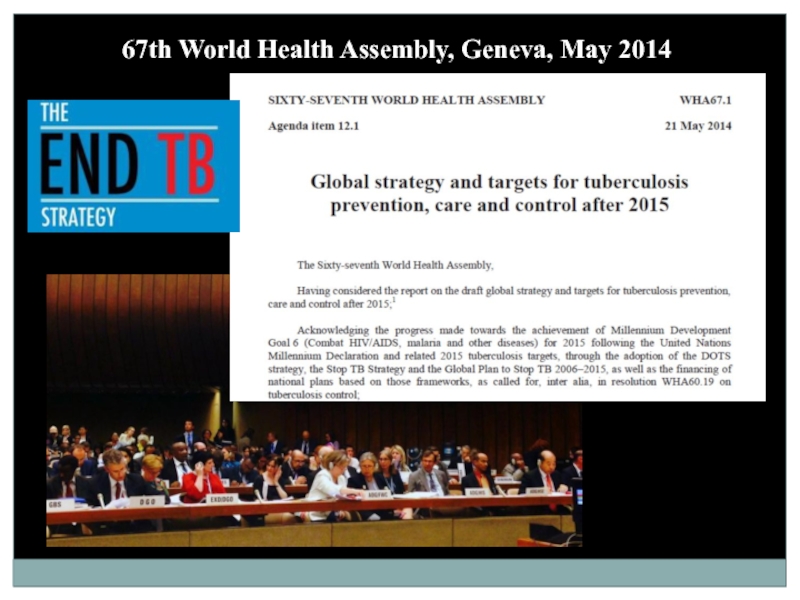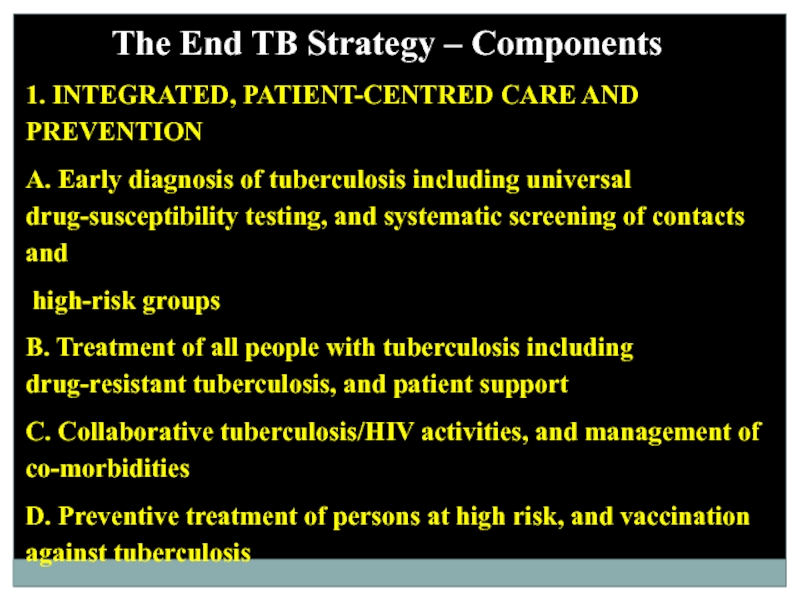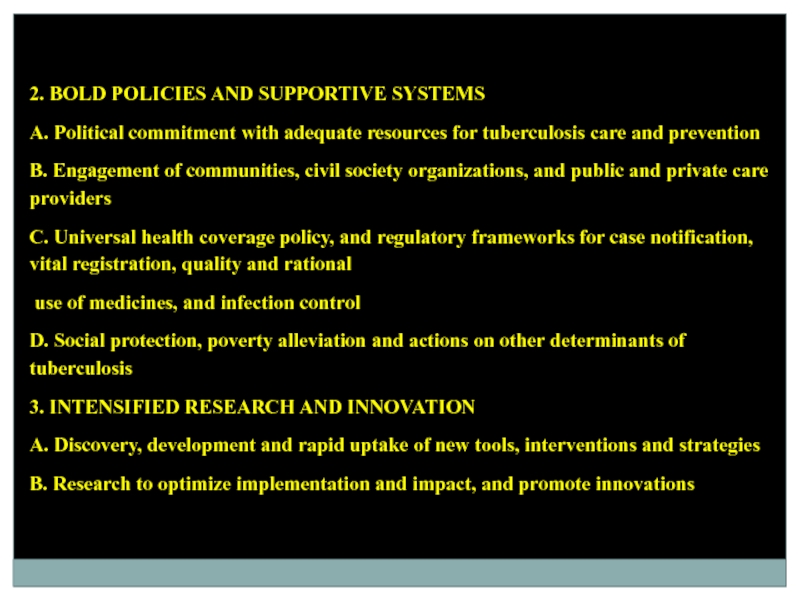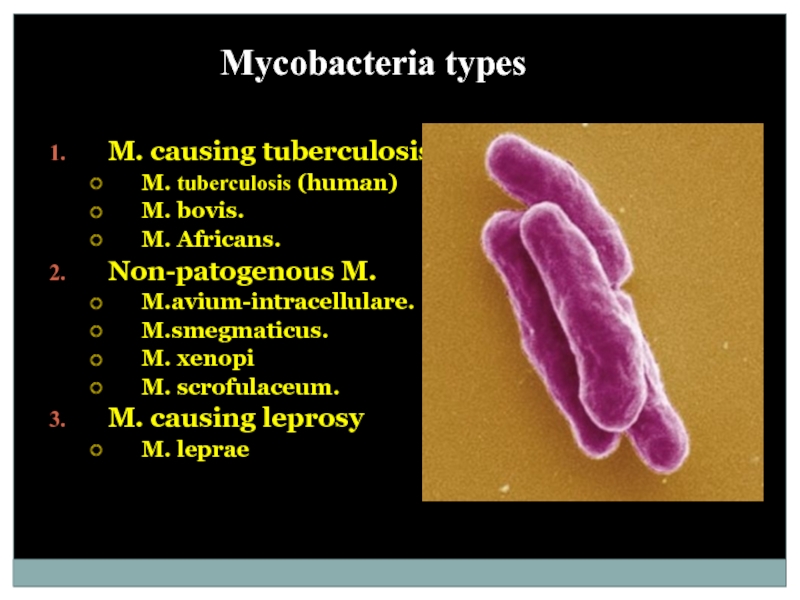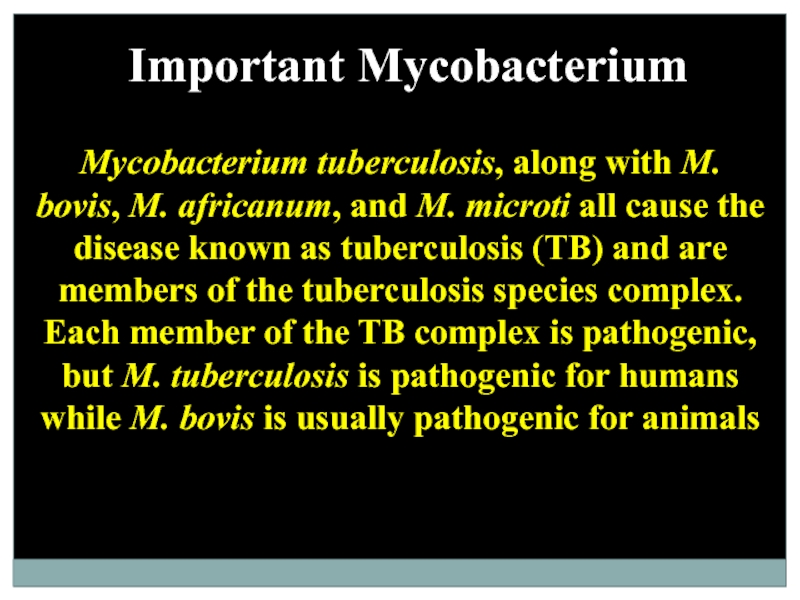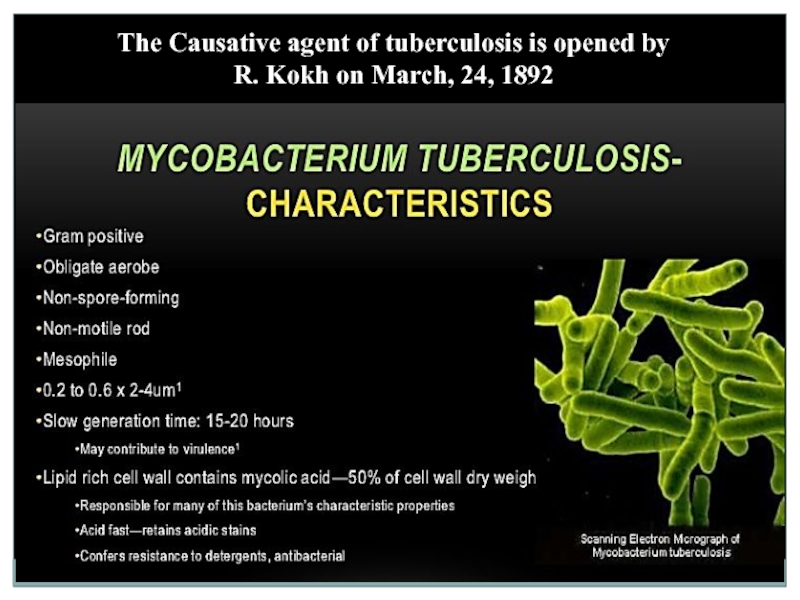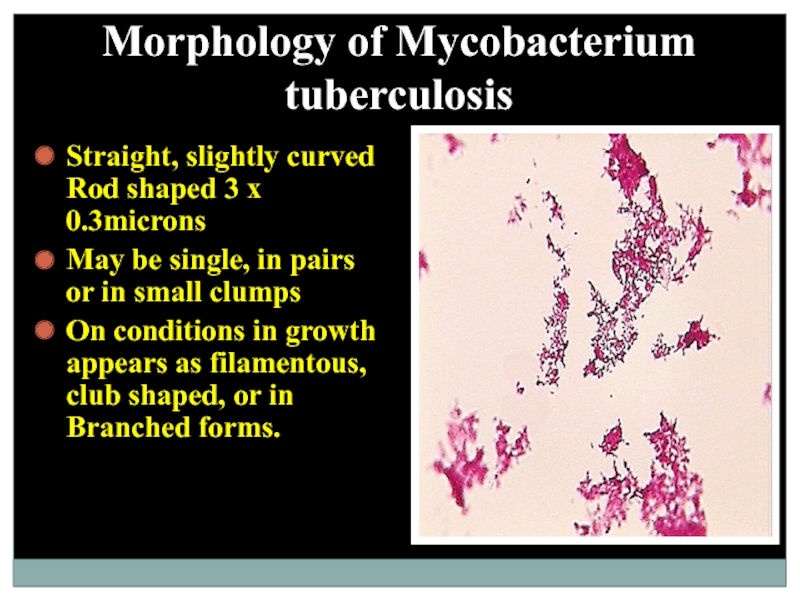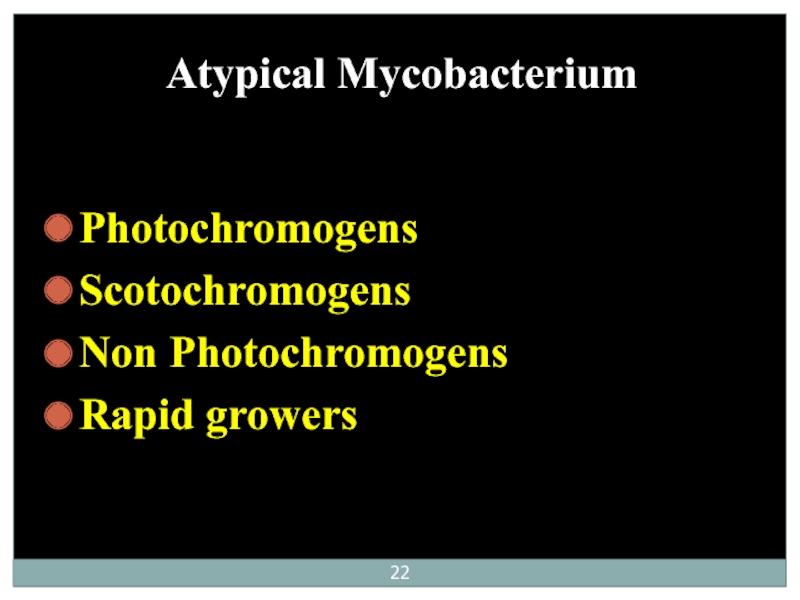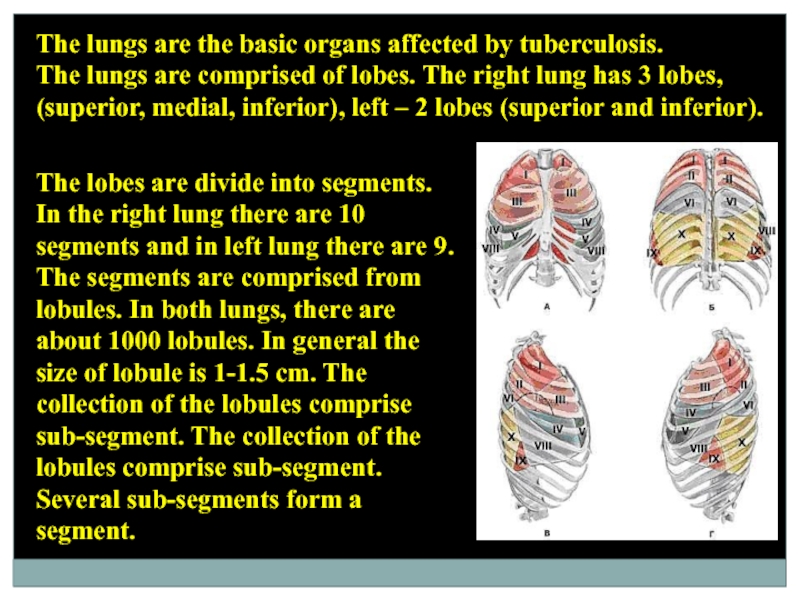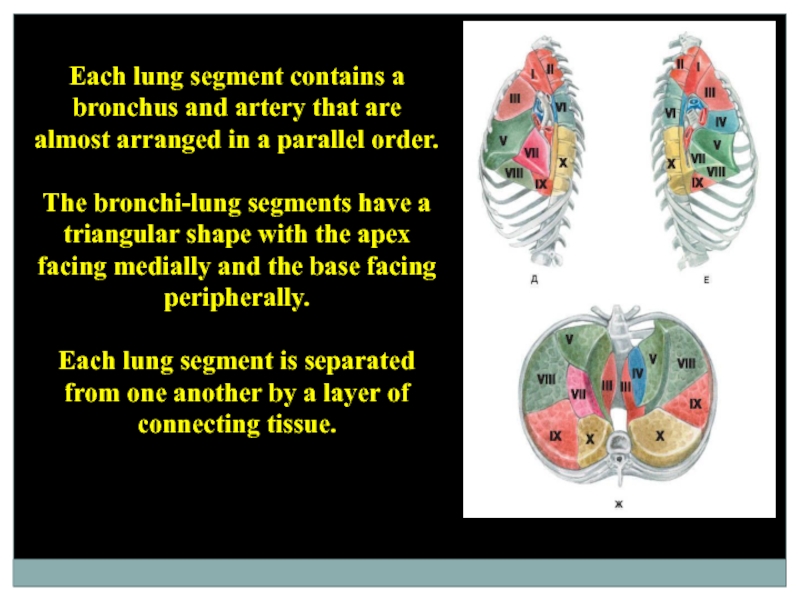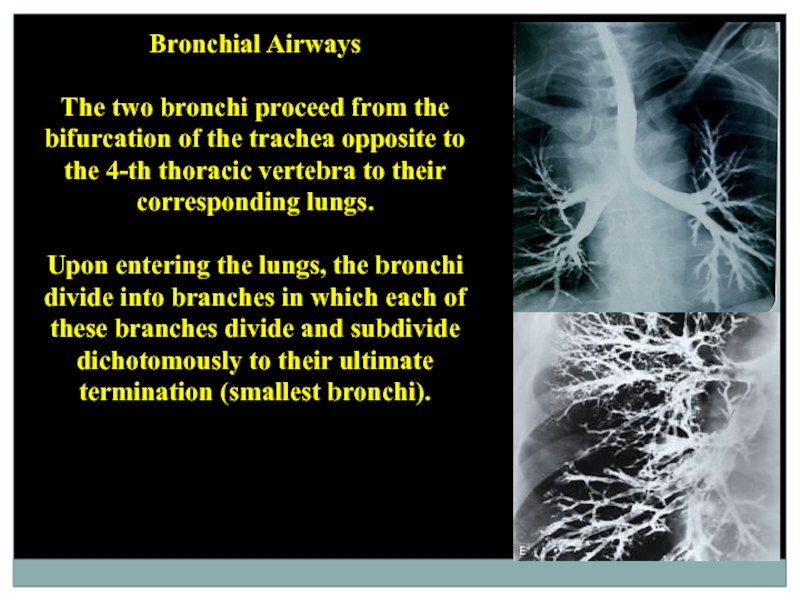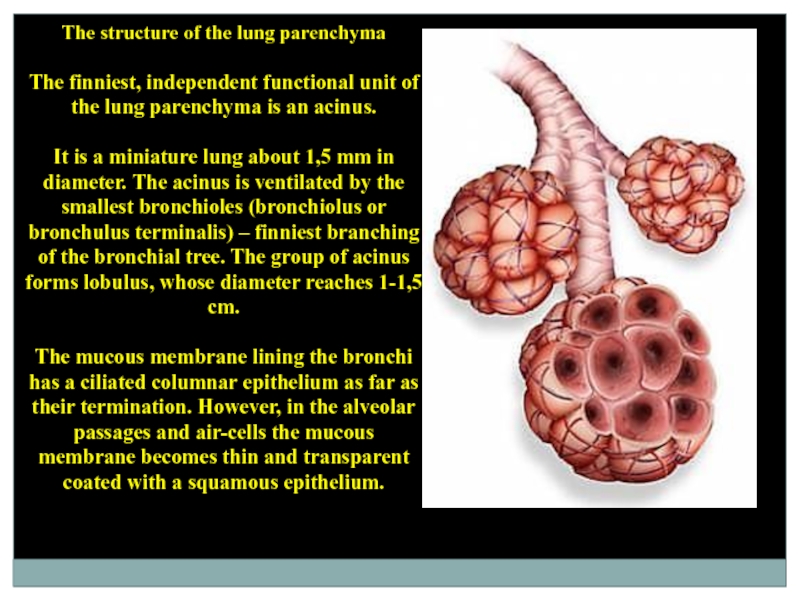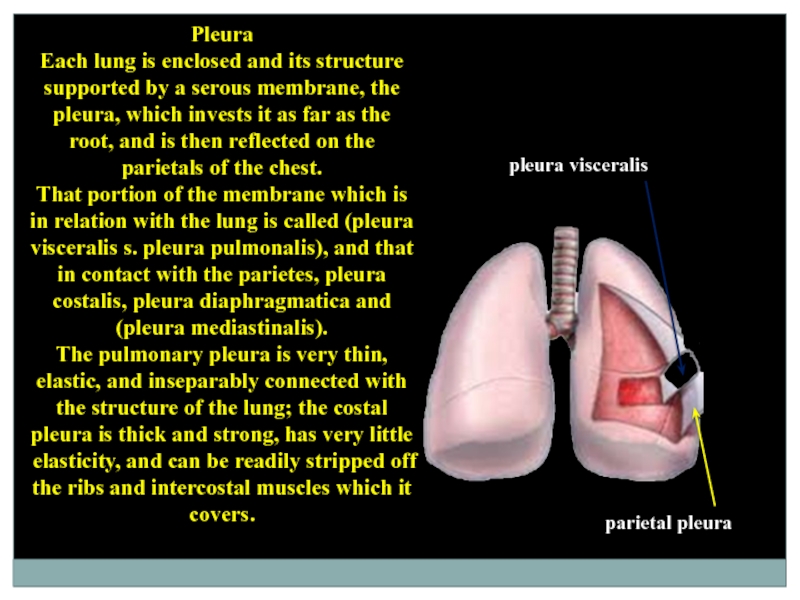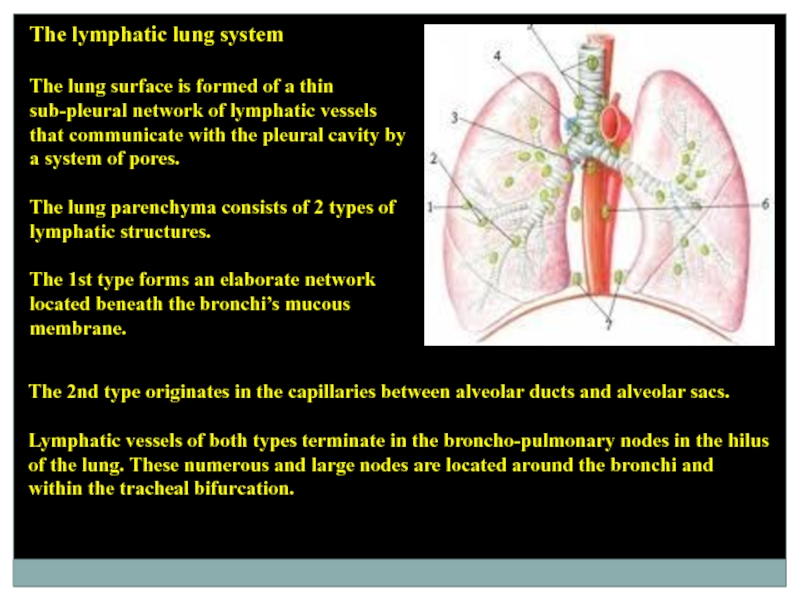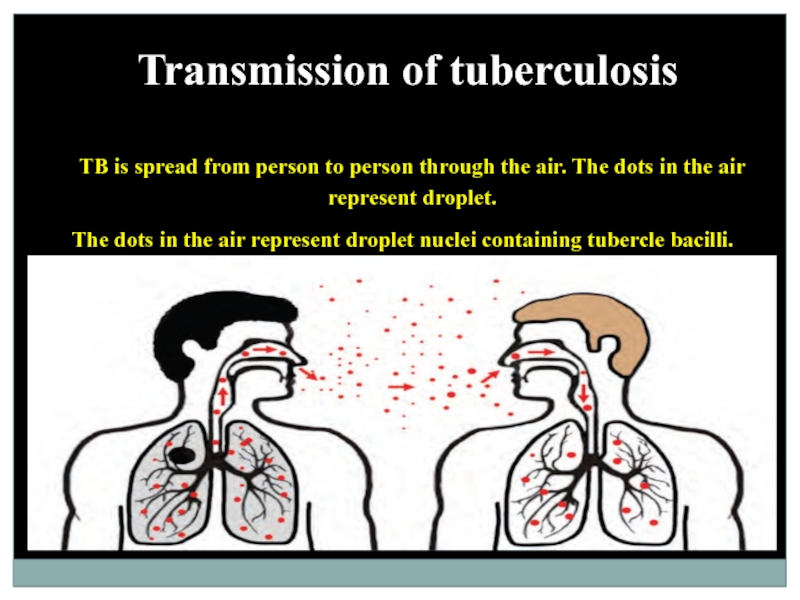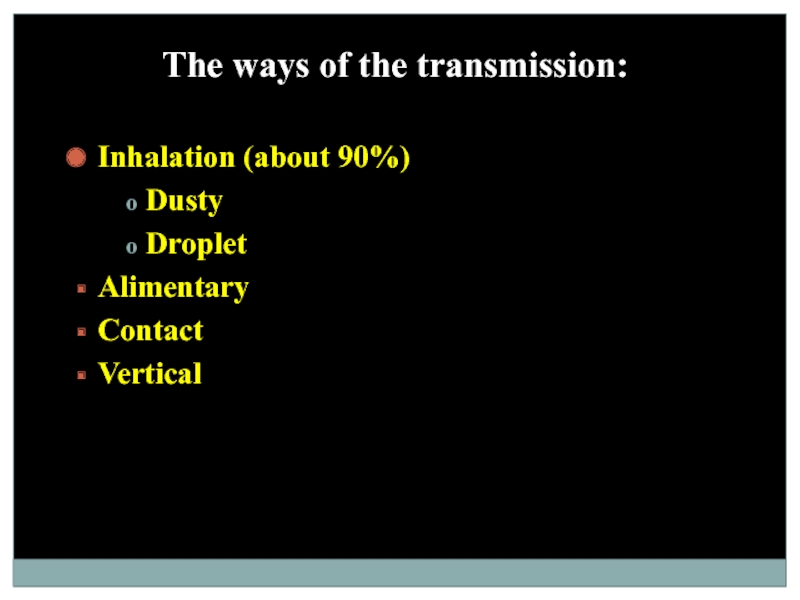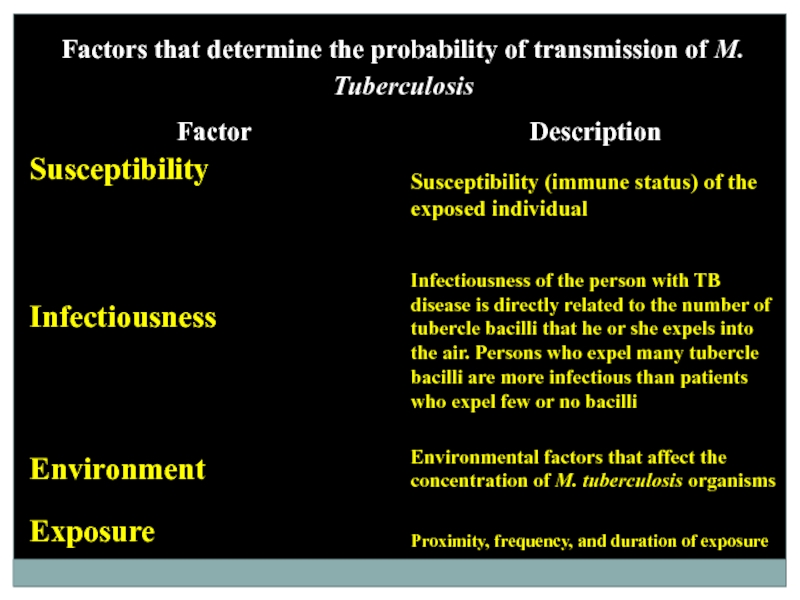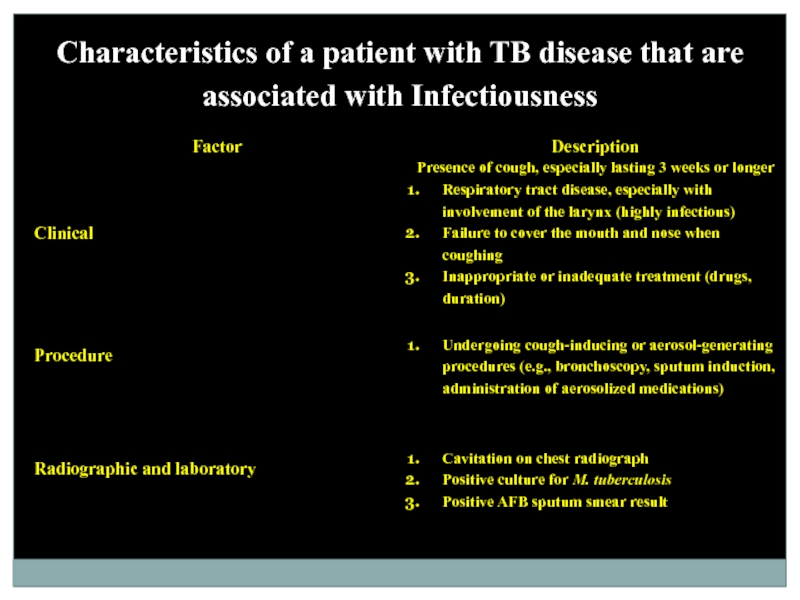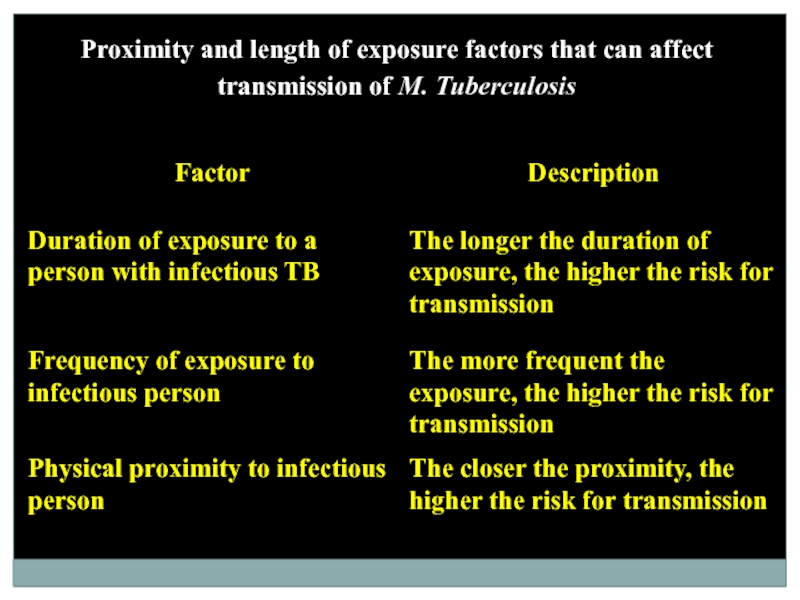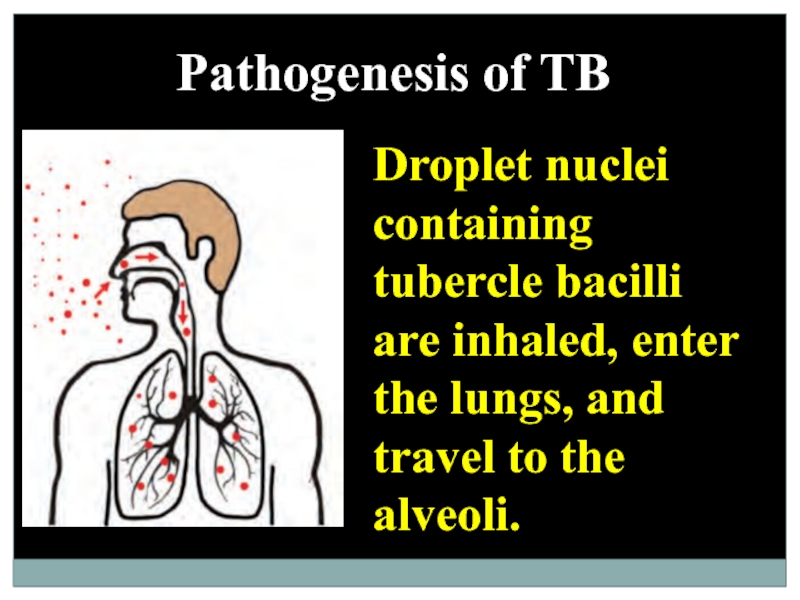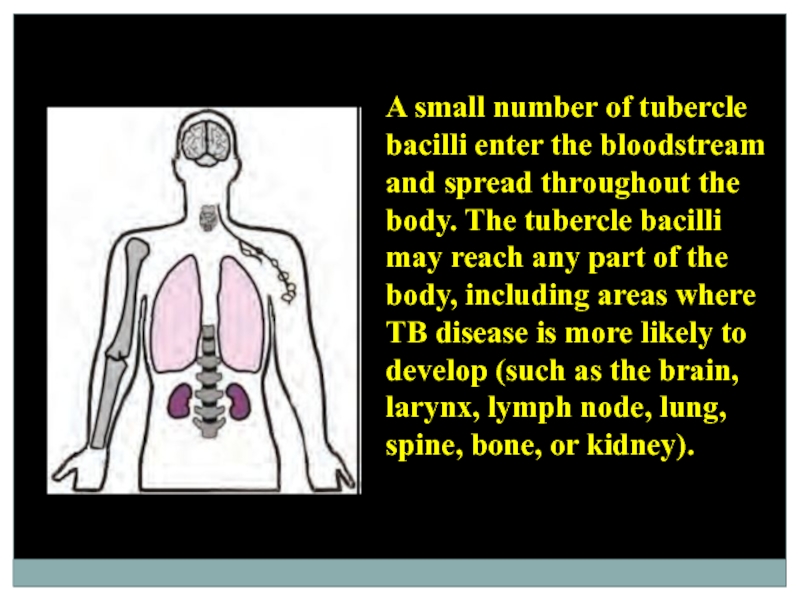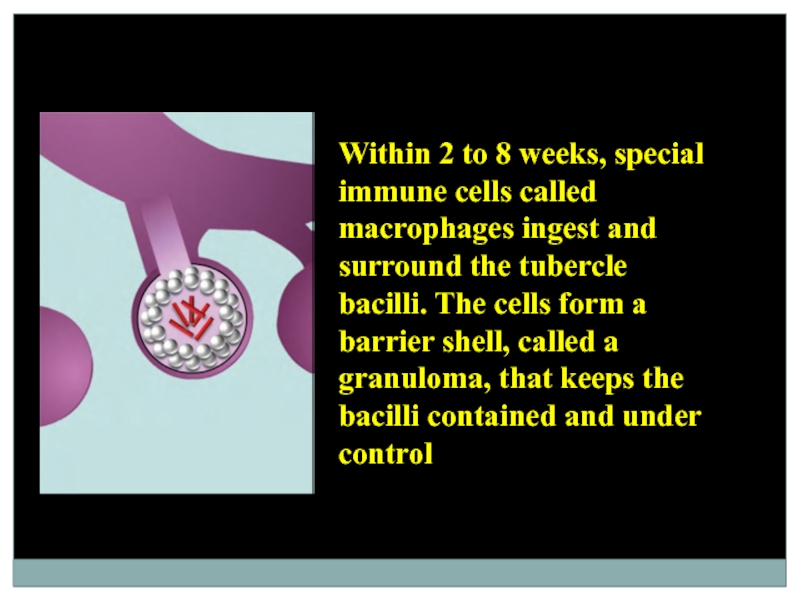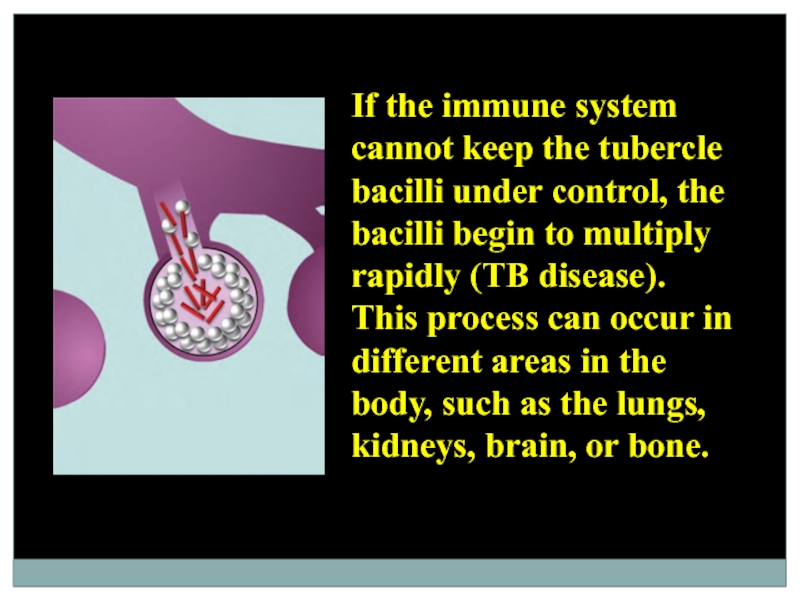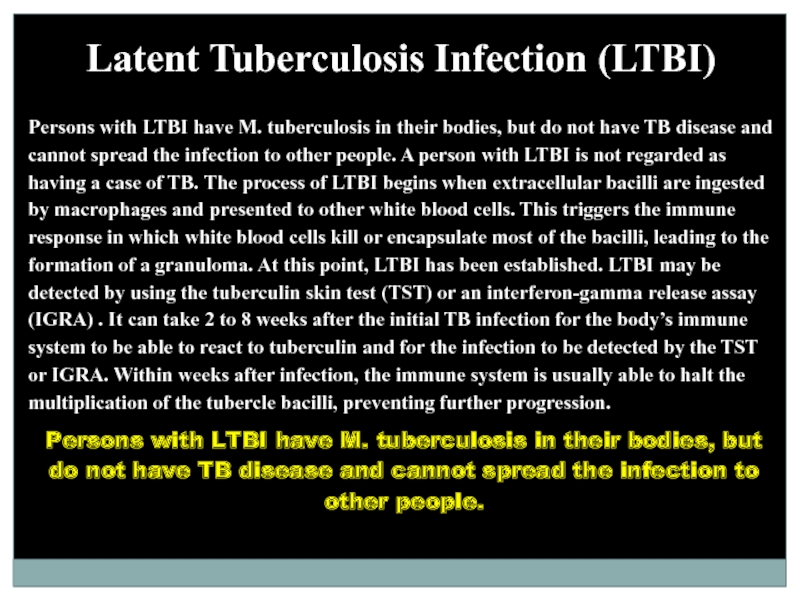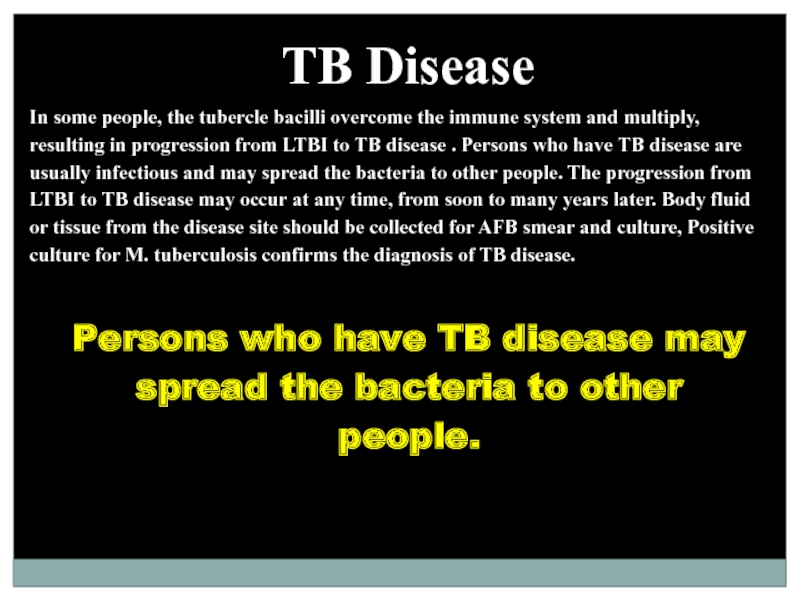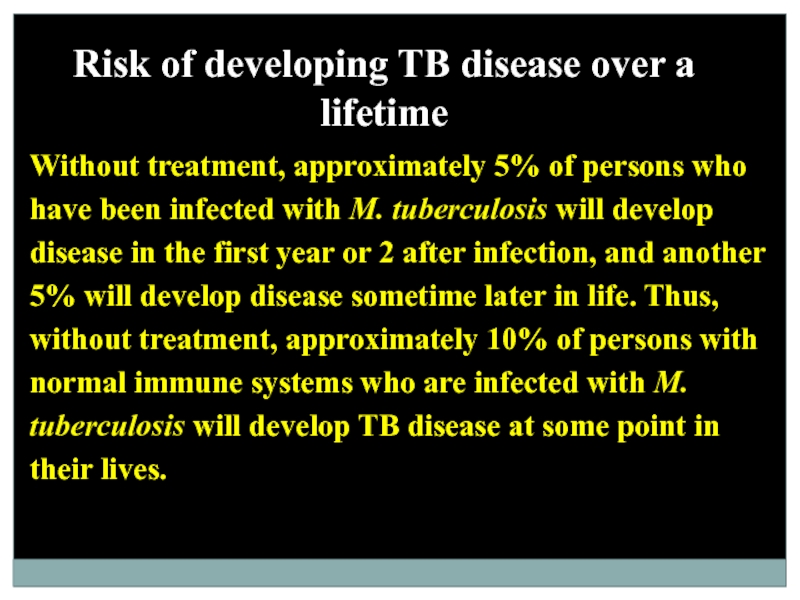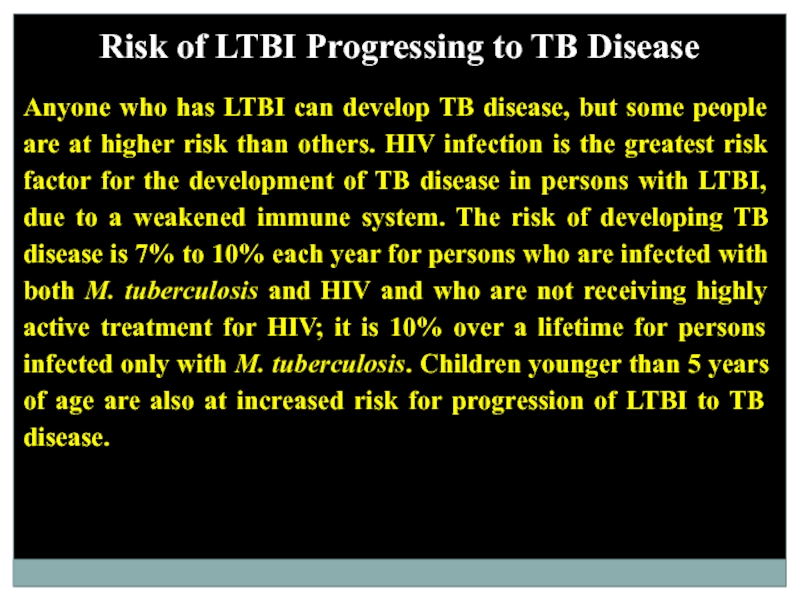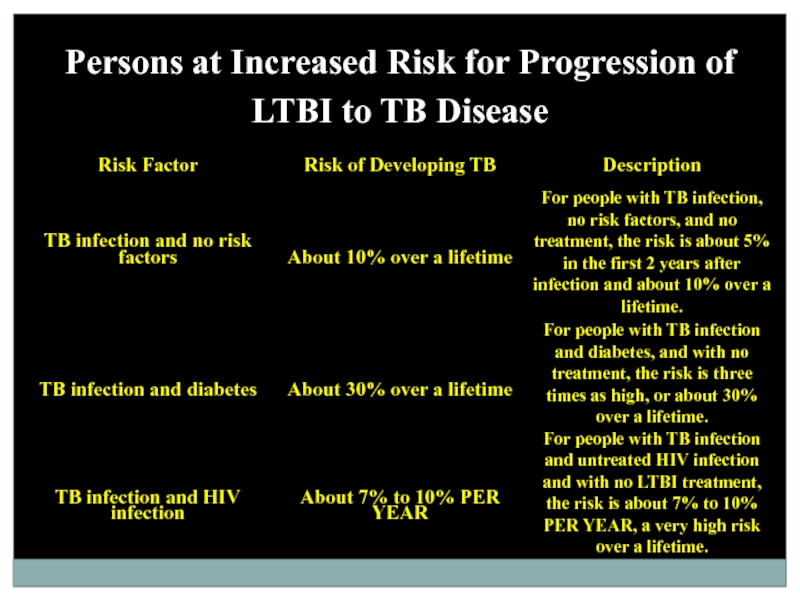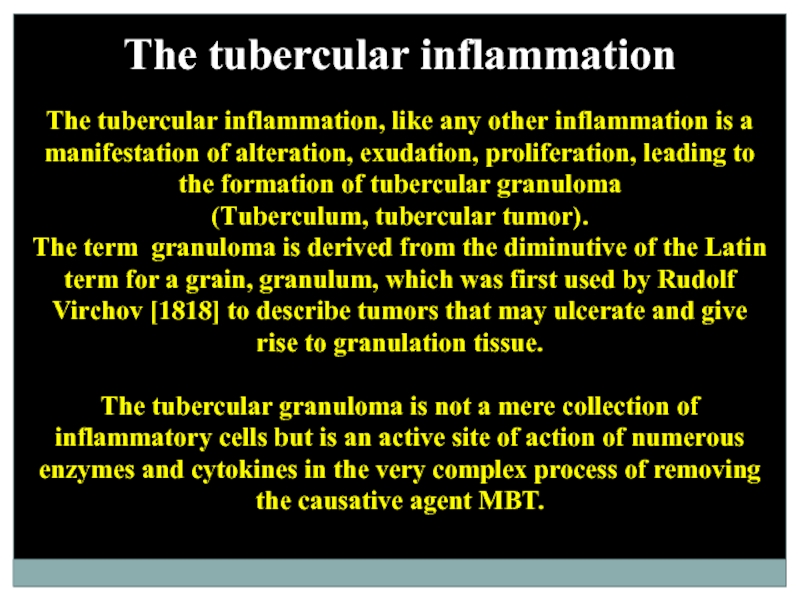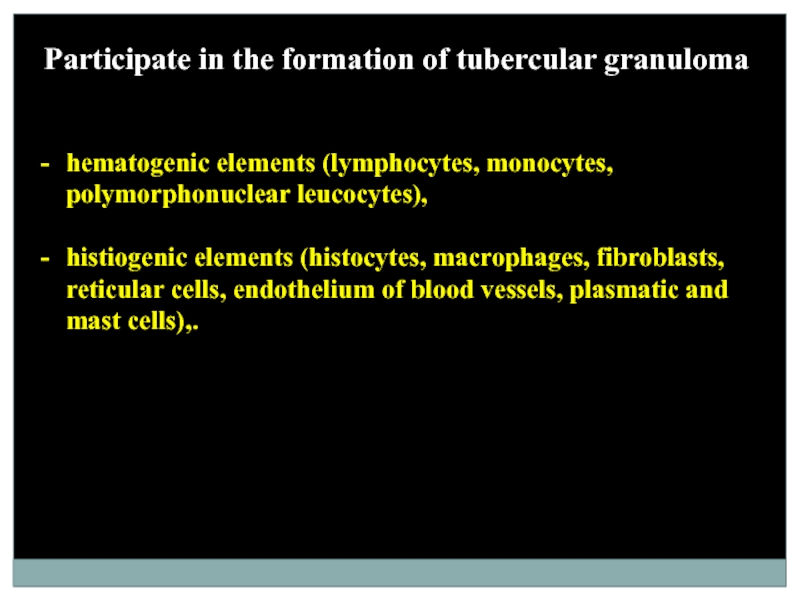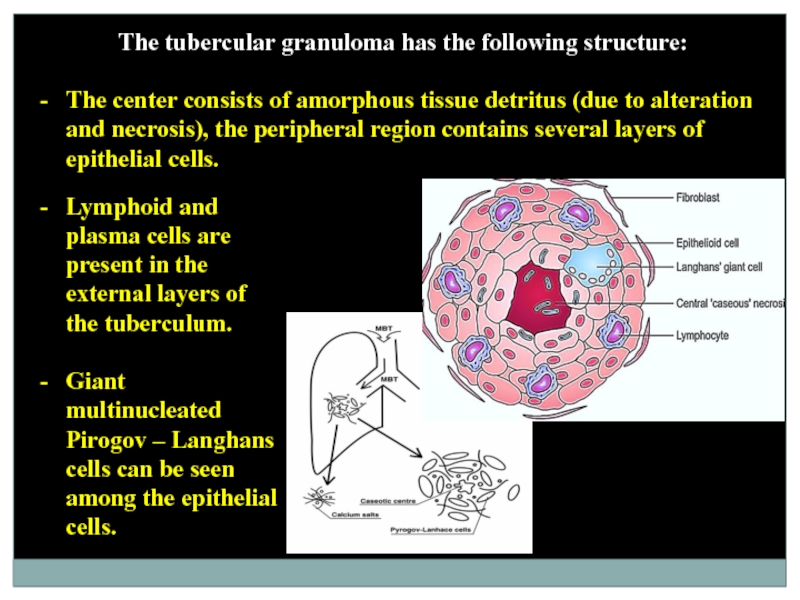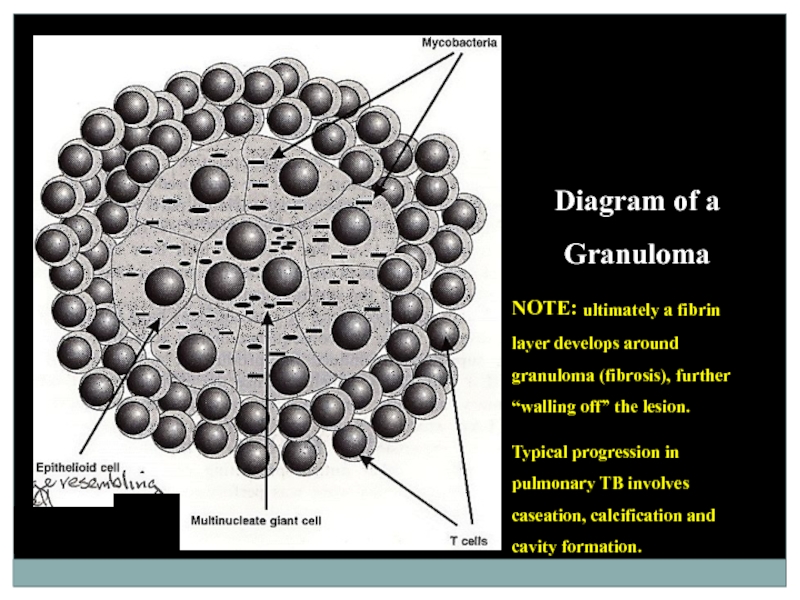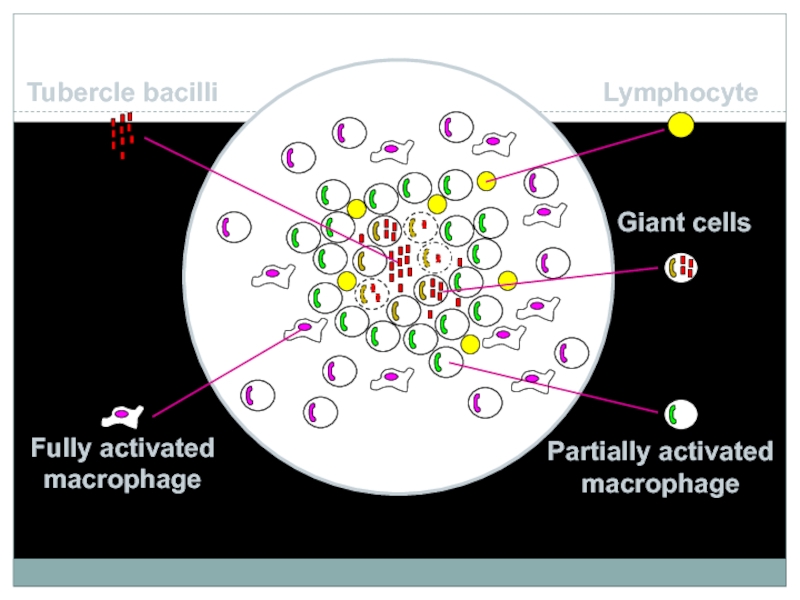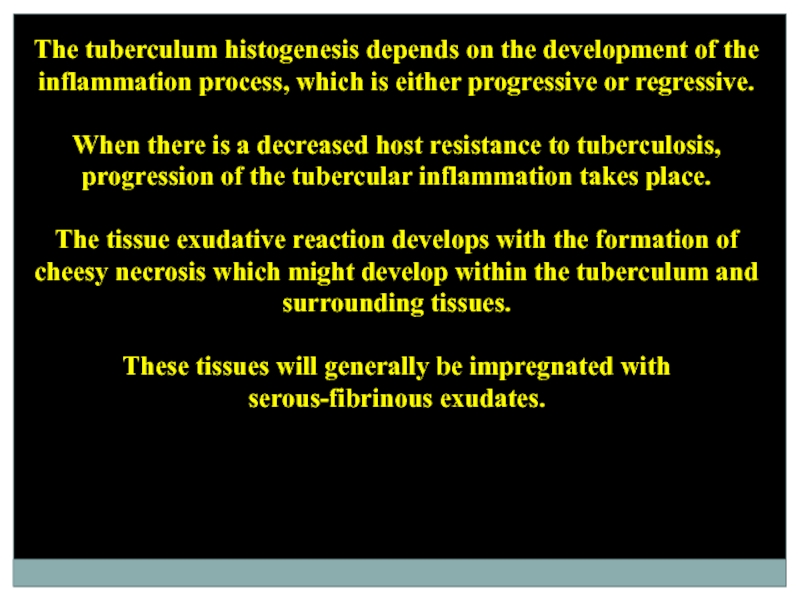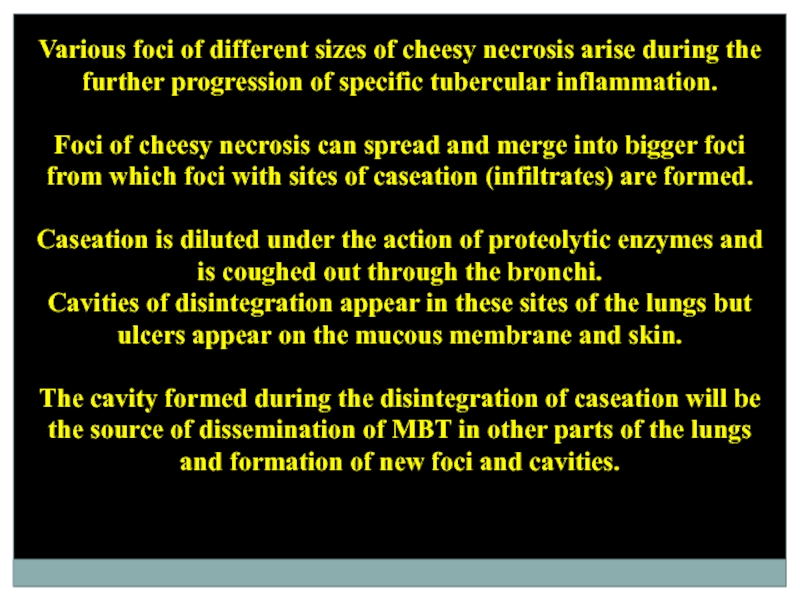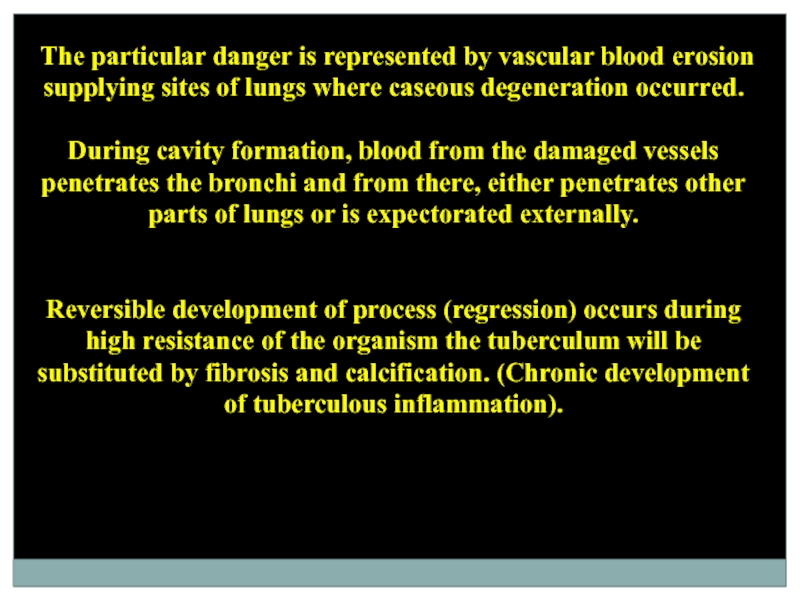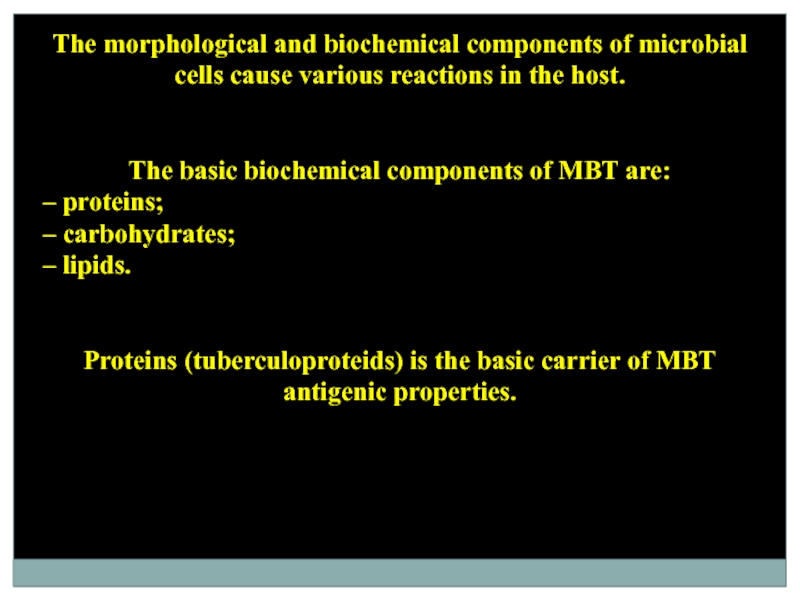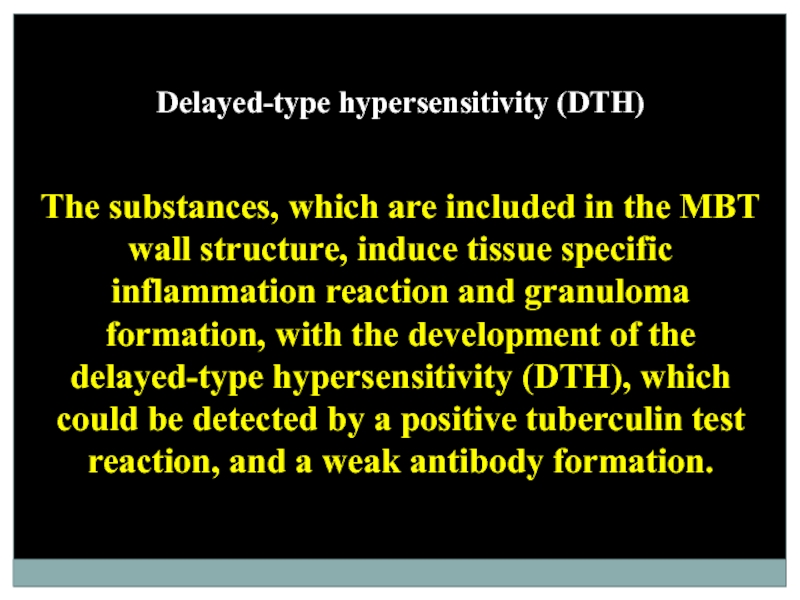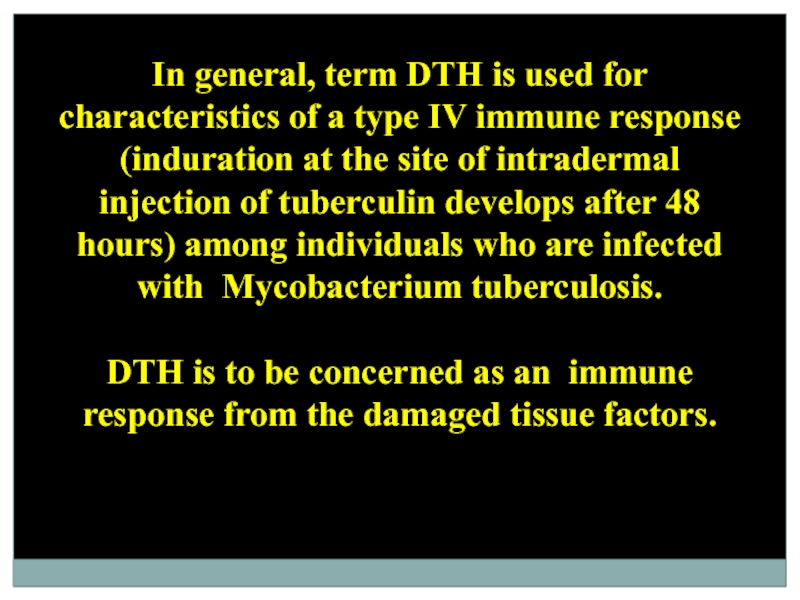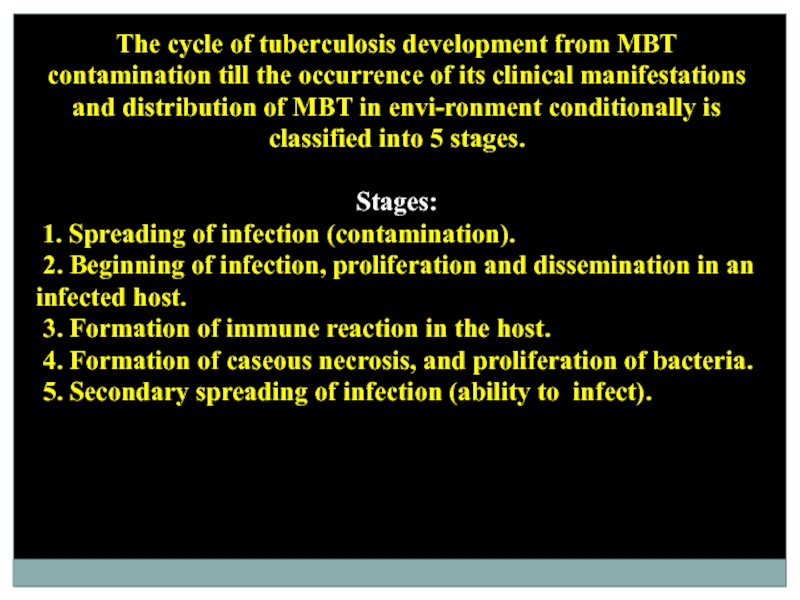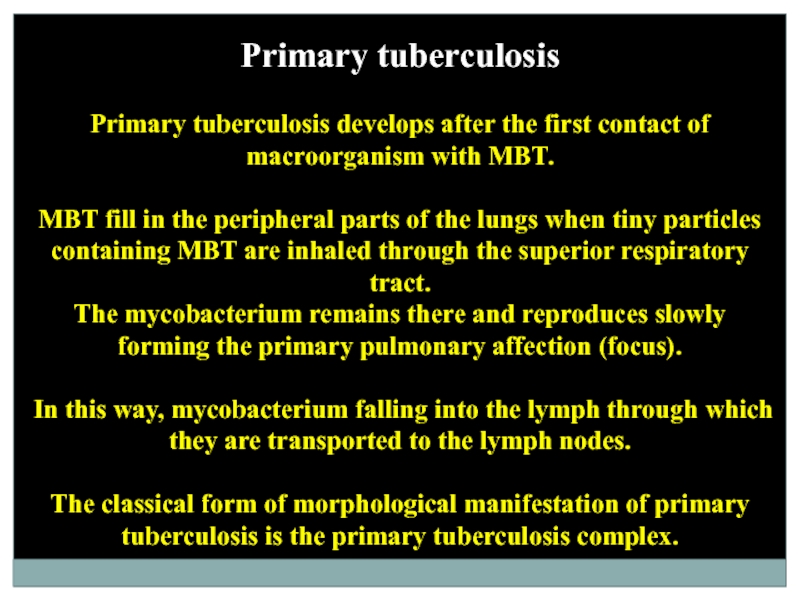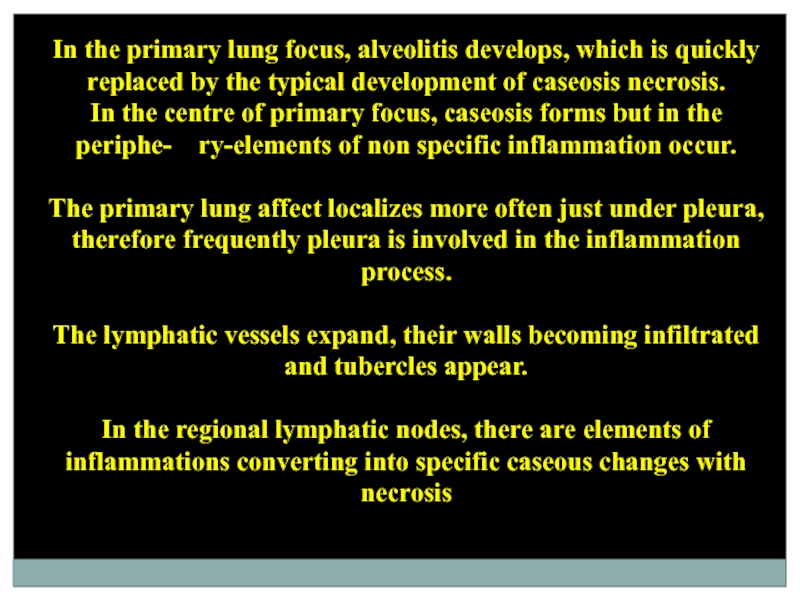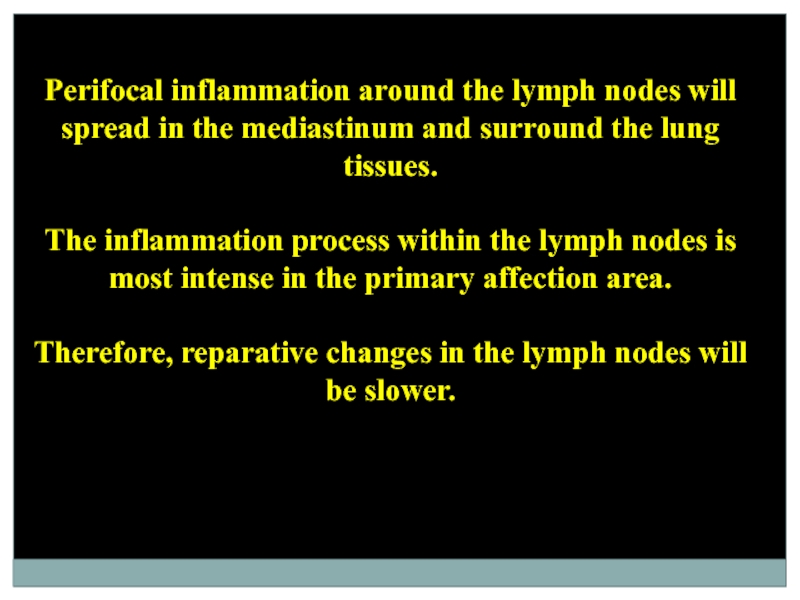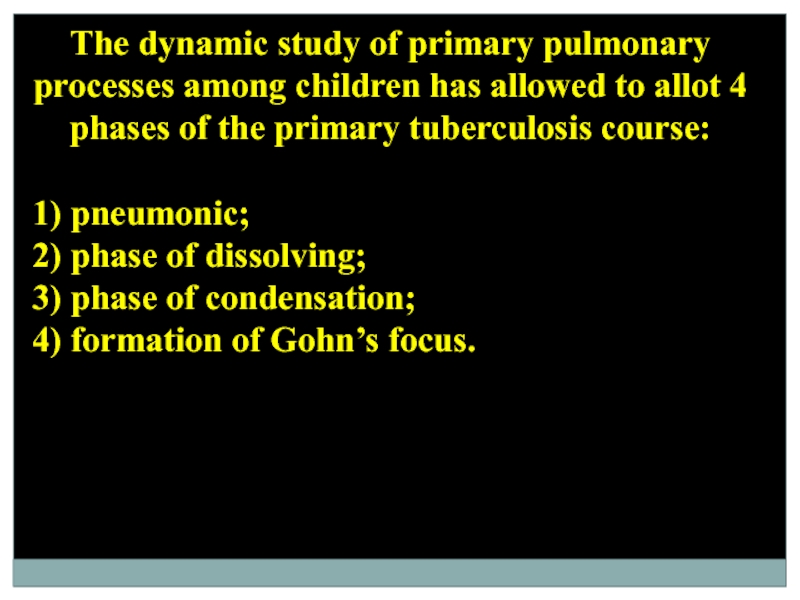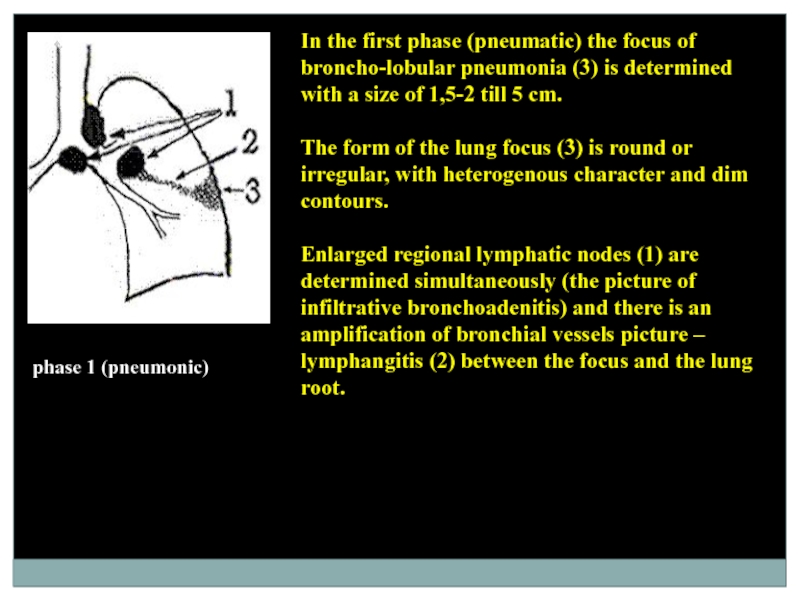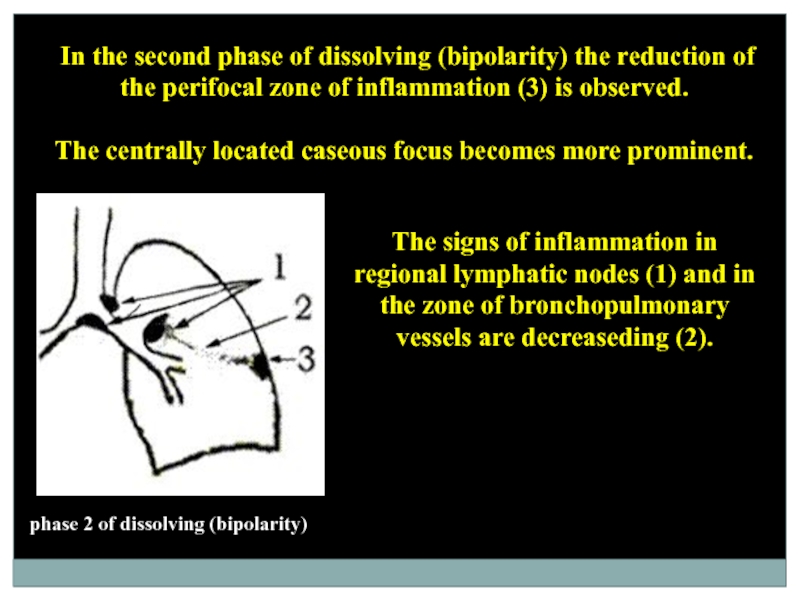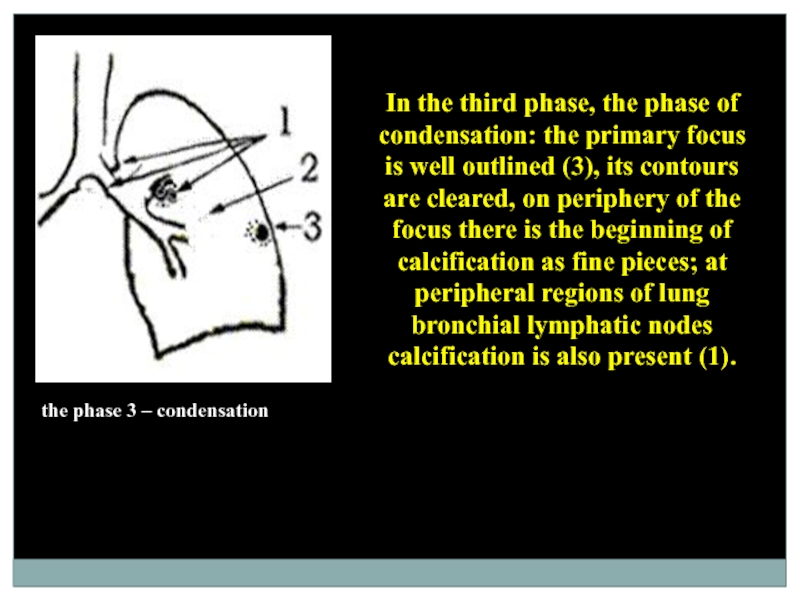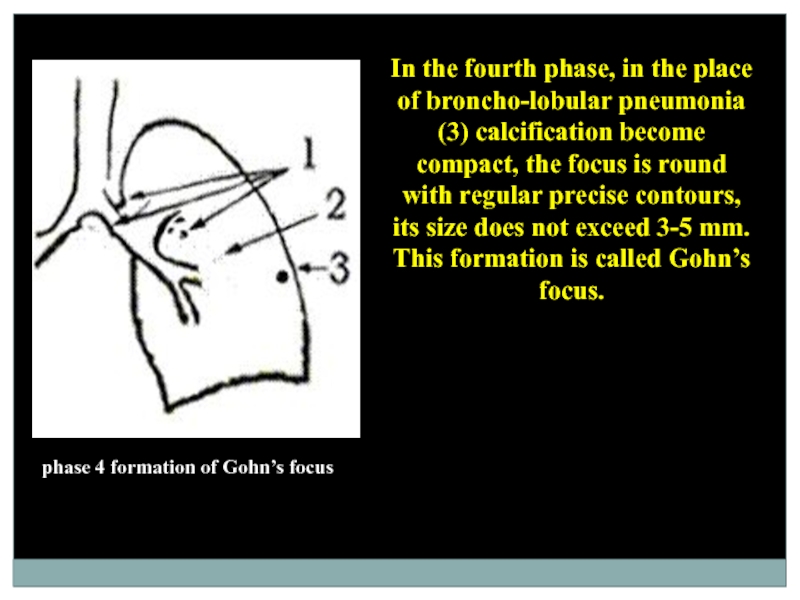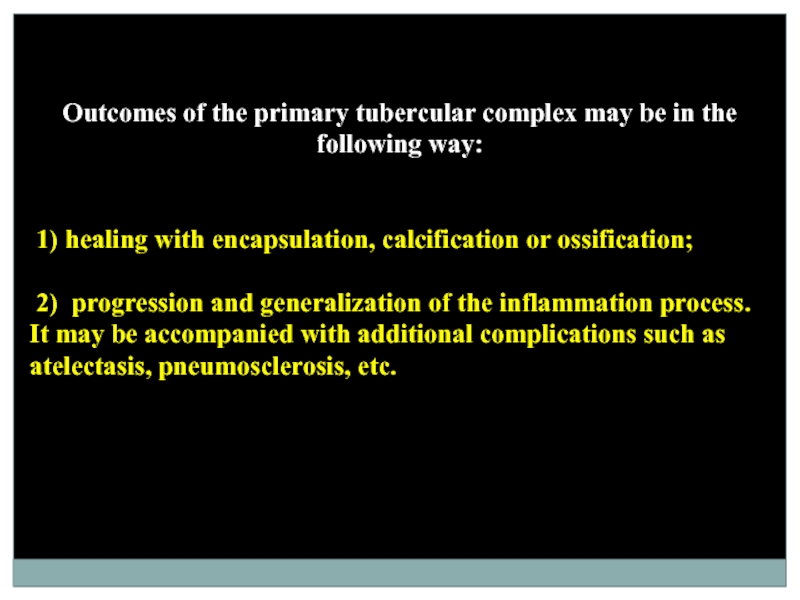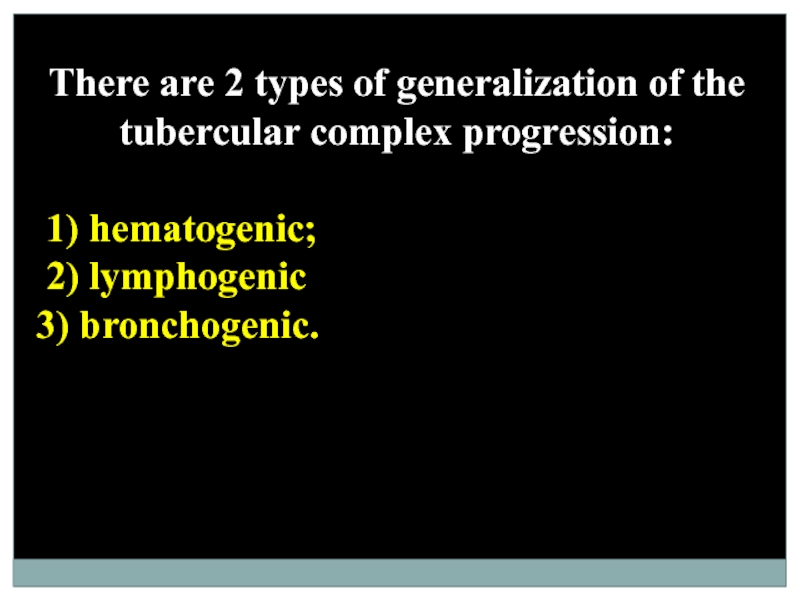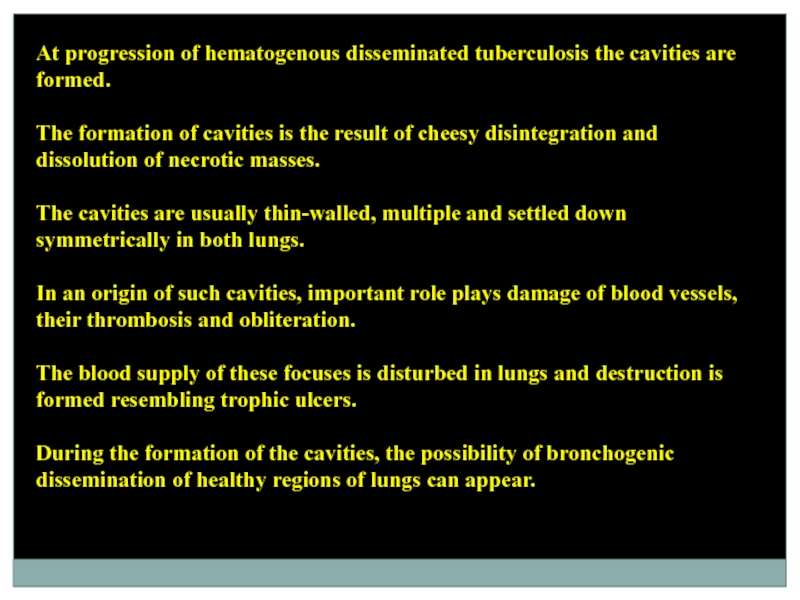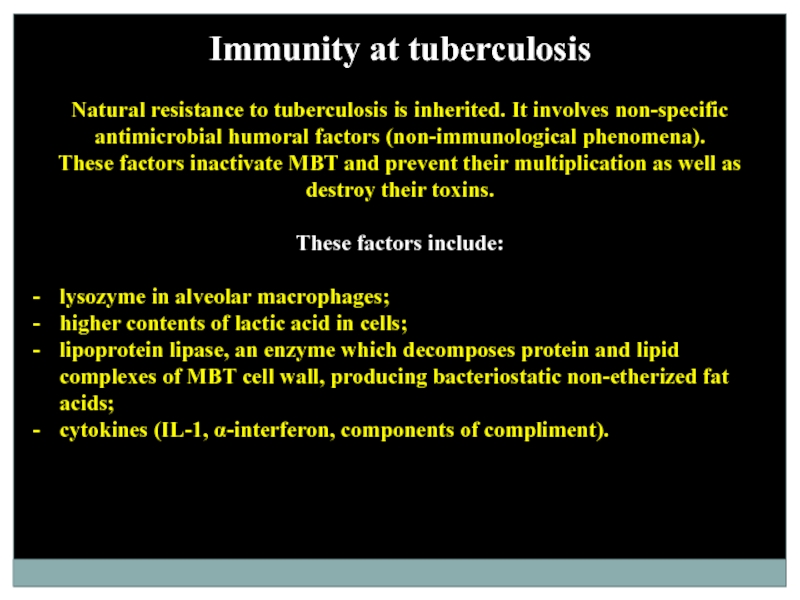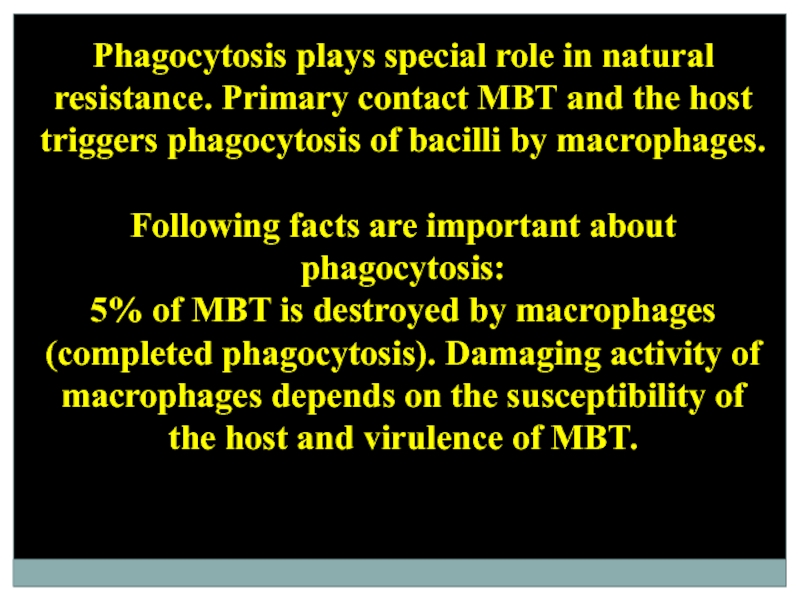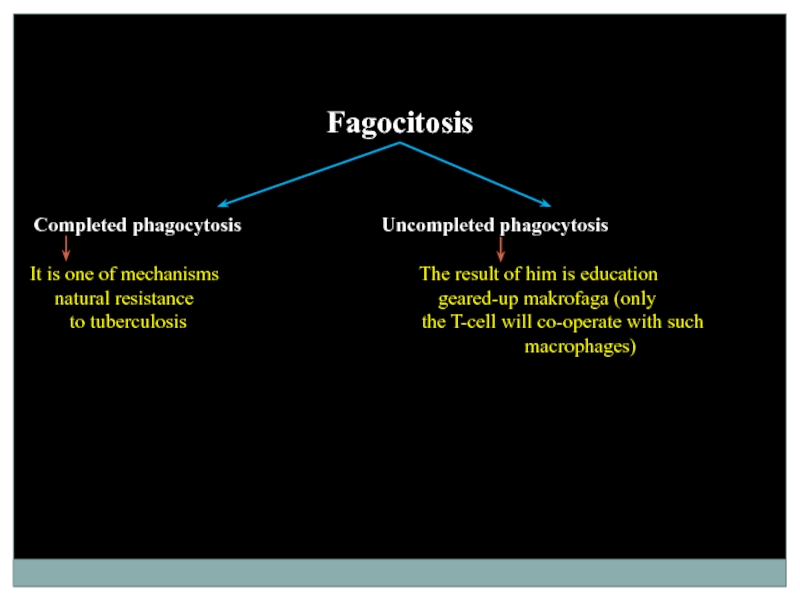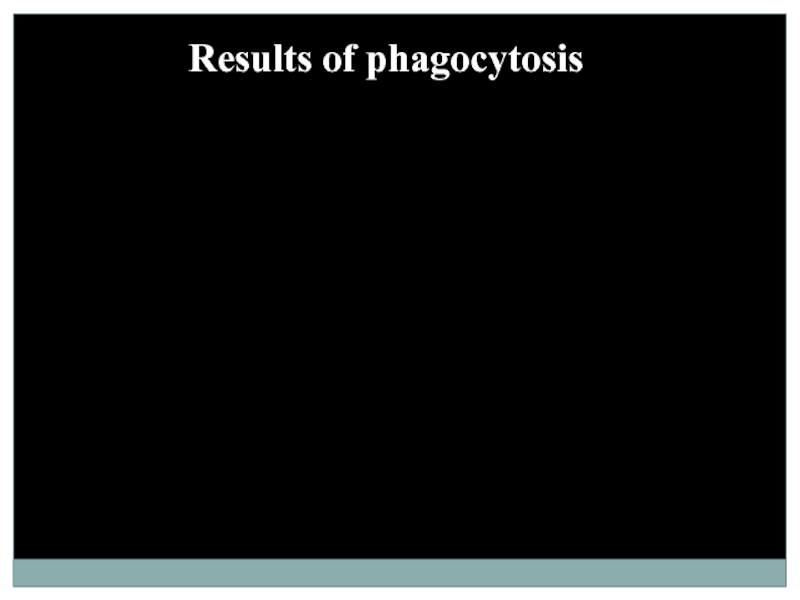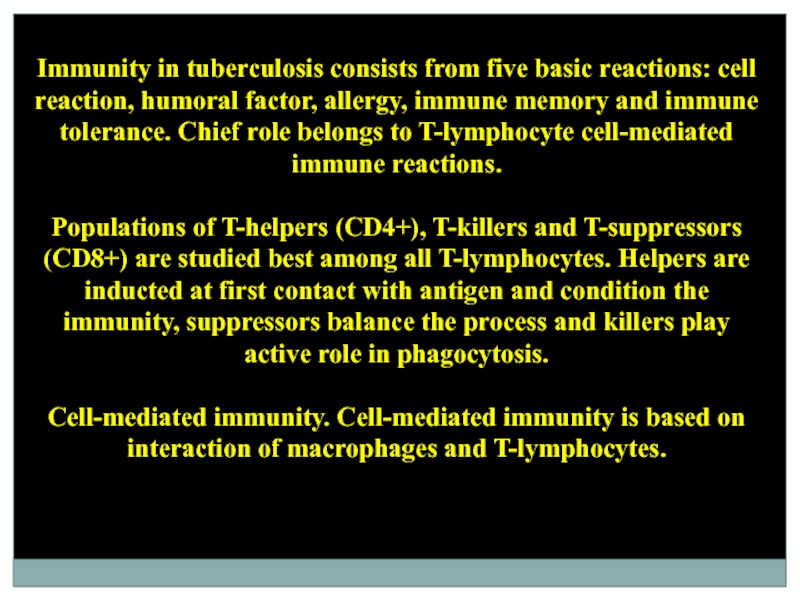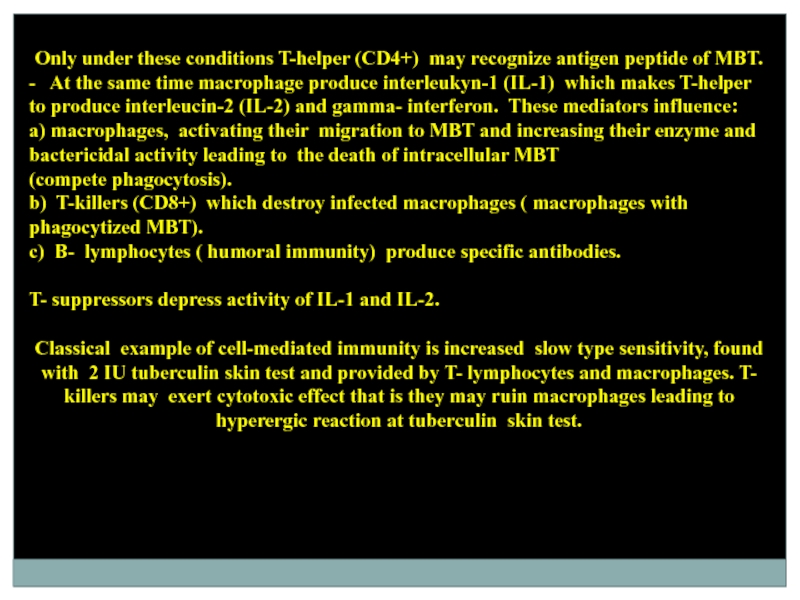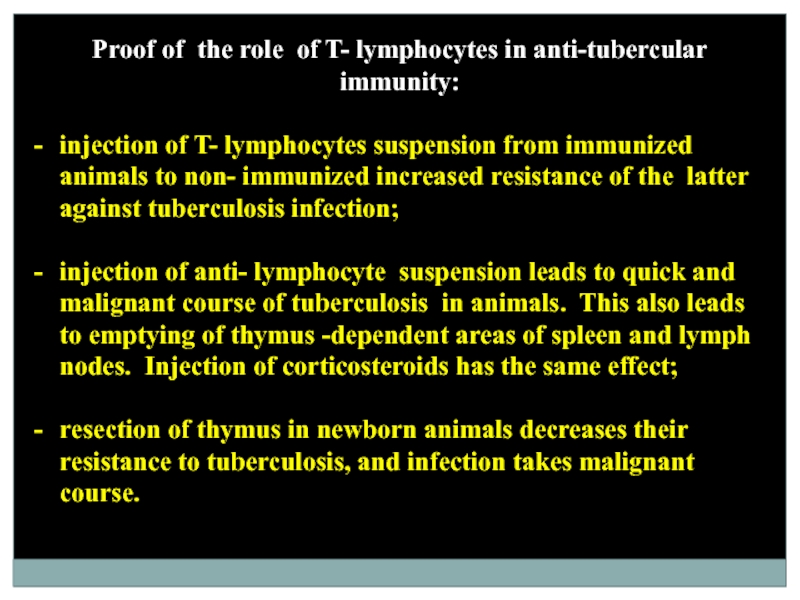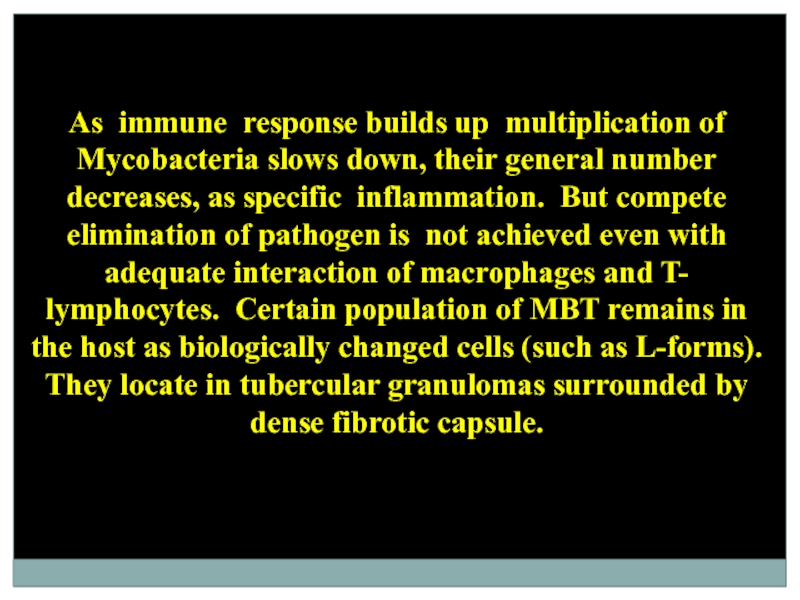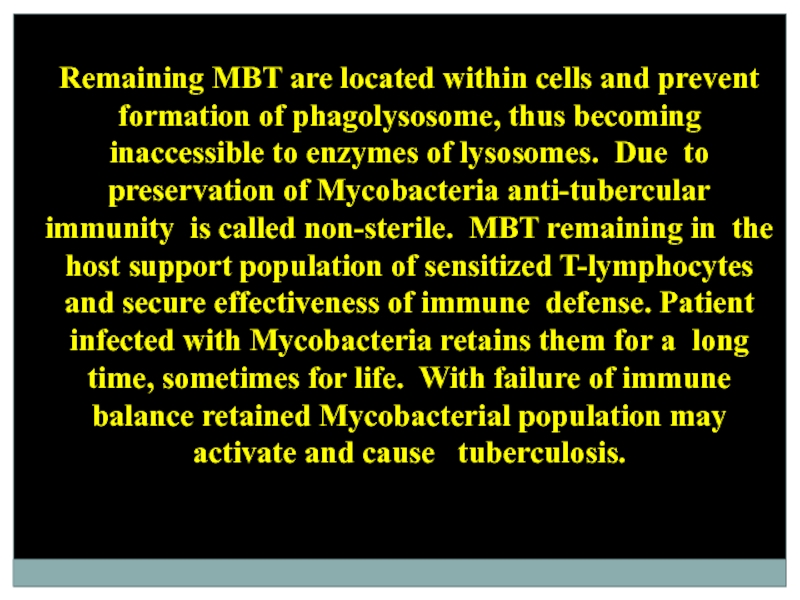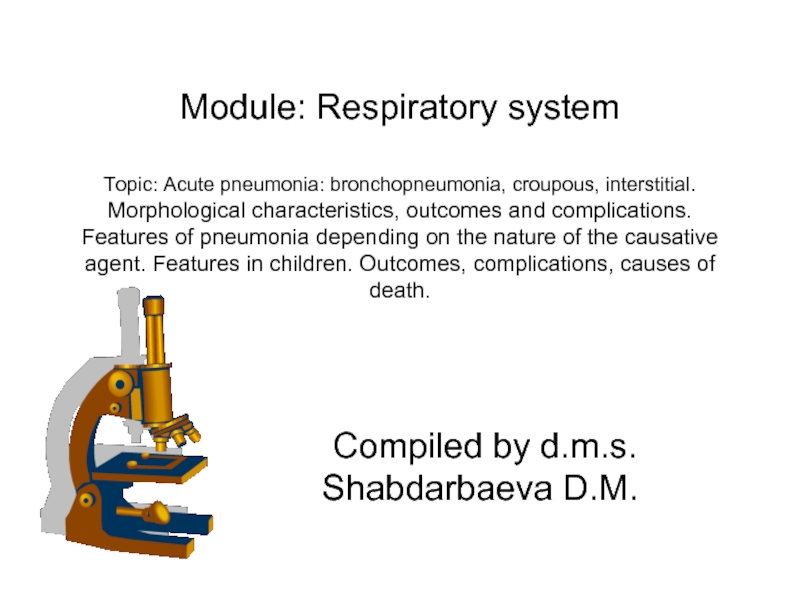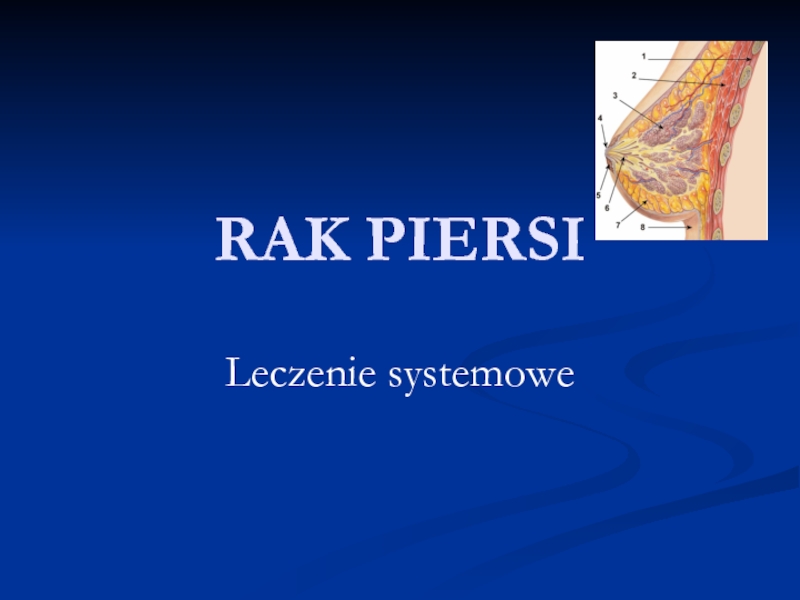Zaporizhzhia State Medical University
Department of phthisiology and pulmonology
R.N. Yasinskiy
(assistant of department)
e-mail: yarn85@mail.ru
- Главная
- Разное
- Дизайн
- Бизнес и предпринимательство
- Аналитика
- Образование
- Развлечения
- Красота и здоровье
- Финансы
- Государство
- Путешествия
- Спорт
- Недвижимость
- Армия
- Графика
- Культурология
- Еда и кулинария
- Лингвистика
- Английский язык
- Астрономия
- Алгебра
- Биология
- География
- Детские презентации
- Информатика
- История
- Литература
- Маркетинг
- Математика
- Медицина
- Менеджмент
- Музыка
- МХК
- Немецкий язык
- ОБЖ
- Обществознание
- Окружающий мир
- Педагогика
- Русский язык
- Технология
- Физика
- Философия
- Химия
- Шаблоны, картинки для презентаций
- Экология
- Экономика
- Юриспруденция
Importance of tuberculosis as scientific and practical problem. Tuberculosis epidemiology in the world. (Lecture 1) презентация
Содержание
- 1. Importance of tuberculosis as scientific and practical problem. Tuberculosis epidemiology in the world. (Lecture 1)
- 2. Tuberculosis is defined as an infectious disease
- 3. These numbers are expected to increase in
- 4. People who have healthy immune systems can
- 5. The magnitude of the problem: Tuberculosis kills
- 6. Tuberculosis uniqueness: the most ancient among
- 7. Main reasons for tuberculosis reappearance as a
- 8. EPIDEMIOLOGY
- 10. 5 PRIORITIES TO ELIMINATE TB Reaching
- 11. Reaching the "missed" cases early means cutting transmission Share of total missed cases
- 12. Addressing MDR-TB as a crisis Percentage of new TB cases with MDR-TB
- 13. Five priority actions to address the global MDR-TB crisis
- 14. Accelerating response to TB/HIV means cutting transmission
- 15. 67th World Health Assembly, Geneva, May 2014
- 16. The End TB Strategy – Components 1.
- 17. 2. BOLD POLICIES AND SUPPORTIVE SYSTEMS A.
- 18. Mycobacteria types M. causing tuberculosis M. tuberculosis
- 19. Important Mycobacterium Mycobacterium tuberculosis, along with M.
- 20. The Causative agent of tuberculosis is opened by R. Kokh on March, 24, 1892
- 21. Morphology of Mycobacterium tuberculosis Straight, slightly curved
- 22. Atypical Mycobacterium Photochromogens Scotochromogens Non Photochromogens Rapid growers
- 23. The lungs are the basic organs affected
- 24. Each lung segment contains a bronchus and
- 25. Bronchial Airways The two bronchi
- 26. The structure of the lung parenchyma
- 27. Pleura Each lung is enclosed and
- 28. The lymphatic lung system The
- 29. Transmission of tuberculosis TB is spread from
- 30. The ways of the transmission: Inhalation (about 90%) Dusty Droplet Alimentary Contact Vertical
- 31. Factors that determine the probability of transmission of M. Tuberculosis
- 32. Characteristics of a patient with TB disease that are associated with Infectiousness
- 33. Proximity and length of exposure factors that can affect transmission of M. Tuberculosis
- 34. Pathogenesis of TB Droplet nuclei containing tubercle
- 35. Tubercle bacilli multiply in the alveoli.
- 36. A small number of tubercle bacilli enter
- 37. Within 2 to 8 weeks, special immune
- 38. If the immune system cannot keep the
- 39. Latent Tuberculosis Infection (LTBI) Persons with LTBI
- 40. TB Disease In some people, the tubercle
- 41. Risk of developing TB disease over a
- 42. Risk of LTBI Progressing to TB Disease
- 43. Persons at Increased Risk for Progression of LTBI to TB Disease
- 44. The tubercular inflammation The tubercular inflammation,
- 45. Participate in the formation of tubercular granuloma
- 46. The tubercular granuloma has the following structure:
- 47. Diagram of a Granuloma NOTE:
- 49. The tuberculum histogenesis depends on the development
- 50. Various foci of different sizes of cheesy
- 51. The particular danger is represented by vascular
- 52. The morphological and biochemical components of microbial
- 53. Delayed-type hypersensitivity (DTH) The substances,
- 54. In general, term DTH is used for
- 55. The cycle of tuberculosis development from MBT
- 56. Primary tuberculosis Primary tuberculosis develops after
- 57. In the primary lung focus, alveolitis develops,
- 58. Perifocal inflammation around the lymph nodes will
- 59. The dynamic study of primary pulmonary processes
- 60. phase 1 (pneumonic) In the first phase
- 61. phase 2 of dissolving (bipolarity) In
- 62. the phase 3 – condensation In the
- 63. phase 4 formation of Gohn’s focus In
- 64. Outcomes of the primary tubercular complex may
- 65. There are 2 types of generalization of
- 66. At progression of hematogenous disseminated tuberculosis the
- 67. Immunity at tuberculosis Natural resistance to
- 68. Phagocytosis plays special role in natural resistance.
- 69. Fagocitosis
- 70. Results of phagocytosis
- 71. Immunity in tuberculosis consists from five basic
- 72. Only under these conditions T-helper (CD4+) may
- 73. Proof of the role of T- lymphocytes
- 74. As immune response builds up multiplication of
- 75. Remaining MBT are located within cells and
- 76. Thank you for your attention!
Слайд 1Importance of tuberculosis as scientific and practical problem. Tuberculosis epidemiology in
Слайд 2Tuberculosis is defined as an infectious disease caused by a bacterium;
It can also be a crippling and deadly disease, and is on the rise in both developed and developing worlds. Globally, it is the leading cause of deaths resulting from a single infectious disease.
Currently, it kills “three million people” a year and could claim up to 30 million lives if not controlled.
Слайд 3These numbers are expected to increase in
the coming years because of
Accurate and rapid diagnosis is essential for controlling the disease, yet the traditional tests for TB produce results that are either inaccurate or take too long to be definitive.
Слайд 4People who have healthy immune systems can often fight off a
These people have no symptoms and are not sick, because the immune system is able to prevent the MBT from growing and multiplying.
This is called latent tuberculosis. People with latent tuberculosis are not contagious and cannot spread the disease to others.
However, anything that stresses the immune system, such as the development of a chronic disease, can allow the bacteria to become active and begin to multiply in the body.
Слайд 5The magnitude of the problem:
Tuberculosis kills more than 3 million people
Tuberculosis produces 25% of all avoidable deaths in developing countries
Tuberculosis produces more death than any other single infectious disease , so its the deadliest one
About the 1/3 of the world population are infected by tuberculosis
Слайд 6Tuberculosis uniqueness:
the most ancient among known infection
the most ubiquitous infection
infection
infection from which human being isn’t able to deliver
Слайд 7Main reasons for tuberculosis reappearance as a global challenge:
Drug-resistance
Human immunodeficiency virus
Social disturbances
Слайд 105 PRIORITIES TO ELIMINATE TB
Reaching the “missed” cases (3 million
Address MDR-TB as crisis
Accelerate response to TB/HIV
Increase financing to close resource gaps
Intensify research and ensure rapid uptake of innovations
Слайд 14Accelerating response to TB/HIV means cutting transmission and mortality
Estimated HIV prevalence
Слайд 16The End TB Strategy – Components
1. INTEGRATED, PATIENT-CENTRED CARE AND PREVENTION
A.
high-risk groups
B. Treatment of all people with tuberculosis including drug-resistant tuberculosis, and patient support
C. Collaborative tuberculosis/HIV activities, and management of co-morbidities
D. Preventive treatment of persons at high risk, and vaccination against tuberculosis
Слайд 172. BOLD POLICIES AND SUPPORTIVE SYSTEMS
A. Political commitment with adequate resources
B. Engagement of communities, civil society organizations, and public and private care providers
C. Universal health coverage policy, and regulatory frameworks for case notification, vital registration, quality and rational
use of medicines, and infection control
D. Social protection, poverty alleviation and actions on other determinants of tuberculosis
3. INTENSIFIED RESEARCH AND INNOVATION
A. Discovery, development and rapid uptake of new tools, interventions and strategies
B. Research to optimize implementation and impact, and promote innovations
Слайд 18Mycobacteria types
M. causing tuberculosis
M. tuberculosis (human)
M. bovis.
M. Africans.
Non-patogenous M.
M.avium-intracellulare.
M.smegmaticus.
M. xenopi
M. scrofulaceum.
M.
M. leprae
Слайд 19Important Mycobacterium
Mycobacterium tuberculosis, along with M. bovis, M. africanum, and M.
Слайд 21Morphology of Mycobacterium tuberculosis
Straight, slightly curved Rod shaped 3 x 0.3microns
May
On conditions in growth appears as filamentous, club shaped, or in Branched forms.
Слайд 23The lungs are the basic organs affected by tuberculosis.
The lungs are
The lobes are divide into segments. In the right lung there are 10 segments and in left lung there are 9. The segments are comprised from lobules. In both lungs, there are about 1000 lobules. In general the size of lobule is 1-1.5 cm. The collection of the lobules comprise sub-segment. The collection of the lobules comprise sub-segment. Several sub-segments form a segment.
Слайд 24Each lung segment contains a bronchus and artery that are almost
The bronchi-lung segments have a triangular shape with the apex facing medially and the base facing peripherally.
Each lung segment is separated from one another by a layer of connecting tissue.
Слайд 25Bronchial Airways
The two bronchi proceed from the bifurcation of the
Upon entering the lungs, the bronchi divide into branches in which each of these branches divide and subdivide dichotomously to their ultimate termination (smallest bronchi).
Слайд 26The structure of the lung parenchyma
The finniest, independent functional unit
It is a miniature lung about 1,5 mm in diameter. The acinus is ventilated by the smallest bronchioles (bronchiolus or bronchulus terminalis) – finniest branching of the bronchial tree. The group of acinus forms lobulus, whose diameter reaches 1-1,5 cm.
The mucous membrane lining the bronchi has a ciliated columnar epithelium as far as their termination. However, in the alveolar passages and air-cells the mucous membrane becomes thin and transparent coated with a squamous epithelium.
Слайд 27Pleura
Each lung is enclosed and its structure supported by a
That portion of the membrane which is in relation with the lung is called (pleura visceralis s. pleura pulmonalis), and that in contact with the parietes, pleura costalis, pleura diaphragmatica and (pleura mediastinalis).
The pulmonary pleura is very thin, elastic, and inseparably connected with the structure of the lung; the costal pleura is thick and strong, has very little elasticity, and can be readily stripped off the ribs and intercostal muscles which it covers.
pleura visceralis
parietal pleura
Слайд 28The lymphatic lung system
The lung surface is formed of a
The lung parenchyma consists of 2 types of lymphatic structures.
The 1st type forms an elaborate network located beneath the bronchi’s mucous membrane.
The 2nd type originates in the capillaries between alveolar ducts and alveolar sacs.
Lymphatic vessels of both types terminate in the broncho-pulmonary nodes in the hilus of the lung. These numerous and large nodes are located around the bronchi and within the tracheal bifurcation.
Слайд 29Transmission of tuberculosis
TB is spread from person to person through the
The dots in the air represent droplet nuclei containing tubercle bacilli.
Слайд 34Pathogenesis of TB
Droplet nuclei containing tubercle bacilli are inhaled, enter the
Слайд 36A small number of tubercle bacilli enter the bloodstream and spread
Слайд 37Within 2 to 8 weeks, special immune cells called macrophages ingest
Слайд 38If the immune system cannot keep the tubercle bacilli under control,
Слайд 39Latent Tuberculosis Infection (LTBI)
Persons with LTBI have M. tuberculosis in their
Persons with LTBI have M. tuberculosis in their bodies, but do not have TB disease and cannot spread the infection to other people.
Слайд 40TB Disease
In some people, the tubercle bacilli overcome the immune system
Persons who have TB disease may spread the bacteria to other people.
Слайд 41Risk of developing TB disease over a lifetime
Without treatment, approximately
Слайд 42Risk of LTBI Progressing to TB Disease
Anyone who has LTBI can
Слайд 44The tubercular inflammation
The tubercular inflammation, like any other inflammation is a
(Тuberculum, tubercular tumor).
The term granuloma is derived from the diminutive of the Latin term for a grain, granulum, which was first used by Rudolf Virchov [1818] to describe tumors that may ulcerate and give rise to granulation tissue.
The tubercular granuloma is not a mere collection of inflammatory cells but is an active site of action of numerous enzymes and cytokines in the very complex process of removing the causative agent MBT.
Слайд 45Participate in the formation of tubercular granuloma
hematogenic elements (lymphocytes, monocytes, polymorphonuclear
histiogenic elements (histocytes, macrophages, fibroblasts, reticular cells, endothelium of blood vessels, plasmatic and mast cells),.
Слайд 46The tubercular granuloma has the following structure:
The center consists of amorphous
Lymphoid and plasma cells are present in the external layers of the tuberculum.
Giant multinucleated Pirogov – Langhans cells can be seen among the epithelial cells.
Слайд 47Diagram of a Granuloma
NOTE: ultimately a fibrin layer develops around granuloma
Typical progression in pulmonary TB involves caseation, calcification and cavity formation.
Слайд 49The tuberculum histogenesis depends on the development of the inflammation process,
When there is a decreased host resistance to tuberculosis, progression of the tubercular inflammation takes place.
The tissue exudative reaction develops with the formation of cheesy necrosis which might develop within the tuberculum and surrounding tissues.
These tissues will generally be impregnated with serous-fibrinous exudates.
Слайд 50Various foci of different sizes of cheesy necrosis arise during the
Foci of cheesy necrosis can spread and merge into bigger foci from which foci with sites of caseation (infiltrates) are formed.
Caseation is diluted under the action of proteolytic enzymes and is coughed out through the bronchi.
Cavities of disintegration appear in these sites of the lungs but ulcers appear on the mucous membrane and skin.
The cavity formed during the disintegration of caseation will be the source of dissemination of MBT in other parts of the lungs and formation of new foci and cavities.
Слайд 51The particular danger is represented by vascular blood erosion supplying sites
During cavity formation, blood from the damaged vessels penetrates the bronchi and from there, either penetrates other parts of lungs or is expectorated externally.
Reversible development of process (regression) occurs during high resistance of the organism the tuberculum will be substituted by fibrosis and calcification. (Chronic development of tuberculous inflammation).
Слайд 52The morphological and biochemical components of microbial cells cause various reactions
The basic biochemical components of МВТ are:
– proteins;
– carbohydrates;
– lipids.
Proteins (tuberculoproteids) is the basic carrier of МВТ antigenic properties.
Слайд 53Delayed-type hypersensitivity (DTH)
The substances, which are included in the MBT wall
Слайд 54In general, term DTH is used for characteristics of a type
DTH is to be concerned as an immune response from the damaged tissue factors.
Слайд 55The cycle of tuberculosis development from MBT contamination till the occurrence
Stages:
1. Spreading of infection (contamination).
2. Beginning of infection, proliferation and dissemination in an infected host.
3. Formation of immune reaction in the host.
4. Formation of caseous necrosis, and proliferation of bacteria.
5. Secondary spreading of infection (ability to infect).
Слайд 56Primary tuberculosis
Primary tuberculosis develops after the first contact of macroorganism with
MBT fill in the peripheral parts of the lungs when tiny particles containing MBT are inhaled through the superior respiratory tract.
The mycobacterium remains there and reproduces slowly forming the primary pulmonary affection (focus).
In this way, mycobacterium falling into the lymph through which they are transported to the lymph nodes.
The classical form of morphological manifestation of primary tuberculosis is the primary tuberculosis complex.
Слайд 57In the primary lung focus, alveolitis develops, which is quickly replaced
In the centre of primary focus, caseosis forms but in the periphe- ry-elements of non specific inflammation occur.
The primary lung affect localizes more often just under pleura, therefore frequently pleura is involved in the inflammation process.
The lymphatic vessels expand, their walls becoming infiltrated and tubercles appear.
In the regional lymphatic nodes, there are elements of inflammations converting into specific caseous changes with necrosis
Слайд 58Perifocal inflammation around the lymph nodes will spread in the mediastinum
The inflammation process within the lymph nodes is most intense in the primary affection area.
Therefore, reparative changes in the lymph nodes will be slower.
Слайд 59The dynamic study of primary pulmonary processes among children has allowed
1) pneumonic;
2) phase of dissolving;
3) phase of condensation;
4) formation of Gohn’s focus.
Слайд 60phase 1 (pneumonic)
In the first phase (pneumatic) the focus of broncho-lobular
The form of the lung focus (3) is round or irregular, with heterogenous character and dim contours.
Enlarged regional lymphatic nodes (1) are determined simultaneously (the picture of infiltrative bronchoadenitis) and there is an amplification of bronchial vessels picture – lymphangitis (2) between the focus and the lung root.
Слайд 61phase 2 of dissolving (bipolarity)
In the second phase of dissolving
The centrally located caseous focus becomes more prominent.
The signs of inflammation in regional lymphatic nodes (1) and in the zone of bronchopulmonary vessels are decreaseding (2).
Слайд 62the phase 3 – condensation
In the third phase, the phase of
Слайд 63phase 4 formation of Gohn’s focus
In the fourth phase, in the
Слайд 64Outcomes of the primary tubercular complex may be in the following
1) healing with encapsulation, calcification or ossification;
2) progression and generalization of the inflammation process. It may be accompanied with additional complications such as atelectasis, pneumosclerosis, etc.
Слайд 65There are 2 types of generalization of the tubercular complex progression:
2) lymphogenic
3) bronchogenic.
Слайд 66At progression of hematogenous disseminated tuberculosis the cavities are formed.
The
The cavities are usually thin-walled, multiple and settled down symmetrically in both lungs.
In an origin of such cavities, important role plays damage of blood vessels, their thrombosis and obliteration.
The blood supply of these focuses is disturbed in lungs and destruction is formed resembling trophic ulcers.
During the formation of the cavities, the possibility of bronchogenic dissemination of healthy regions of lungs can appear.
Слайд 67Immunity at tuberculosis
Natural resistance to tuberculosis is inherited. It involves non-specific
These factors inactivate MBT and prevent their multiplication as well as destroy their toxins.
These factors include:
lysozyme in alveolar macrophages;
higher contents of lactic acid in cells;
lipoprotein lipase, an enzyme which decomposes protein and lipid complexes of MBT cell wall, producing bacteriostatic non-etherized fat acids;
cytokines (IL-1, α-interferon, components of compliment).
Слайд 68Phagocytosis plays special role in natural resistance. Primary contact MBT and
Following facts are important about phagocytosis:
5% of MBT is destroyed by macrophages (completed phagocytosis). Damaging activity of macrophages depends on the susceptibility of the host and virulence of MBT.
Слайд 69
Fagocitosis
Completed phagocytosis
It is one of mechanisms The result of him is education
natural resistance geared-up makrofaga (only
to tuberculosis the T-cell will co-operate with such
macrophages)
Слайд 71Immunity in tuberculosis consists from five basic reactions: cell reaction, humoral
Populations of T-helpers (CD4+), T-killers and T-suppressors (CD8+) are studied best among all T-lymphocytes. Helpers are inducted at first contact with antigen and condition the immunity, suppressors balance the process and killers play active role in phagocytosis.
Cell-mediated immunity. Cell-mediated immunity is based on interaction of macrophages and T-lymphocytes.
Слайд 72Only under these conditions T-helper (CD4+) may recognize antigen peptide of
- At the same time macrophage produce interleukyn-1 (IL-1) which makes T-helper to produce interleucin-2 (IL-2) and gamma- interferon. These mediators influence:
a) macrophages, activating their migration to MBT and increasing their enzyme and bactericidal activity leading to the death of intracellular MBT
(compete phagocytosis).
b) T-killers (CD8+) which destroy infected macrophages ( macrophages with phagocytized MBT).
c) B- lymphocytes ( humoral immunity) produce specific antibodies.
T- suppressors depress activity of IL-1 and IL-2.
Classical example of cell-mediated immunity is increased slow type sensitivity, found with 2 IU tuberculin skin test and provided by T- lymphocytes and macrophages. T- killers may exert cytotoxic effect that is they may ruin macrophages leading to hyperergic reaction at tuberculin skin test.
Слайд 73Proof of the role of T- lymphocytes in anti-tubercular immunity:
injection of
injection of anti- lymphocyte suspension leads to quick and malignant course of tuberculosis in animals. This also leads to emptying of thymus -dependent areas of spleen and lymph nodes. Injection of corticosteroids has the same effect;
resection of thymus in newborn animals decreases their resistance to tuberculosis, and infection takes malignant course.
